EDEN

BRIDGING SCIENCE AND HOLISTIC HEALING







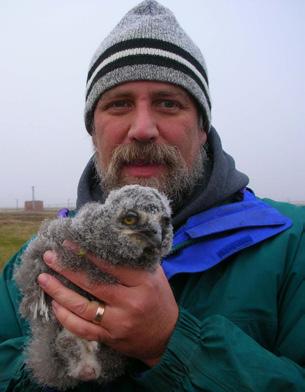




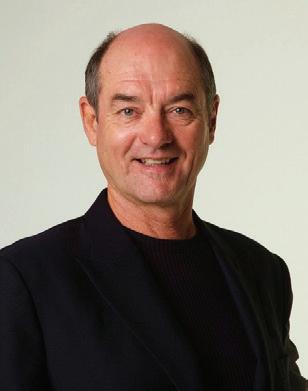













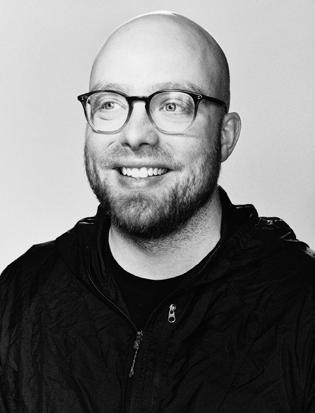
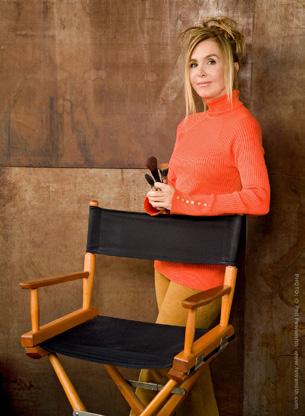

































The Eden Magazine is a free online publication is your guide to healthy living, spiritual awareness, compassion and love for all living beings, holistic lifestyle, mindfulness, organic living, positive thinking, sustainability, and personal development
Founder & Editor-in-Chief
Maryam Morrison
Executive Editor/Contributing Writer
Dina Morrone
Contributing Writers
Dulce Garcia-Morman
Susanna Schroadter
Alexia Melocchi
Sherri Cortland
Joe Santos, Jr.
Dr. Rob Moir
Emilie Macas
Jan Wakefiled
Nikki Pattillo
Polly Wirum zee
Guest Writer
Philip Smith
Contributing Stylists + Makeup Artist
Edward Hakopian
Lisa Joy Walton
Graphics & Photography
JSquared Photography @j2pix (Los Angeles)
Artin Mardirosian (Nexision) (Los Angeles)
Benjamin D. Buren – AliveStudios.Com (Denver, SanFrancisco, Boston)
Sheri Determan (Los Angeles)
Greg Doherty (Los Vegas)
Ben Rollins (Atlanta)
Web developer
Brad wallace https://bradwallacedesign.com/
325 N. Maple Dr. Po Box 5132 Beverly Hills, CA 90209
To purchase a copy, visit us at www.theedenmagazine.com




52
FOO FOO FIGHTER TO THE END by Jerry Maio
56
THE TIMELESS PATH OF SHAMANISM: EMBRACING THE ANIMAL SELF & SPIRIT WORLD by Matthew Wood
62
PLANT YOUR DESIRES IN YOUR ENERGY FIELD by George Lizos 70
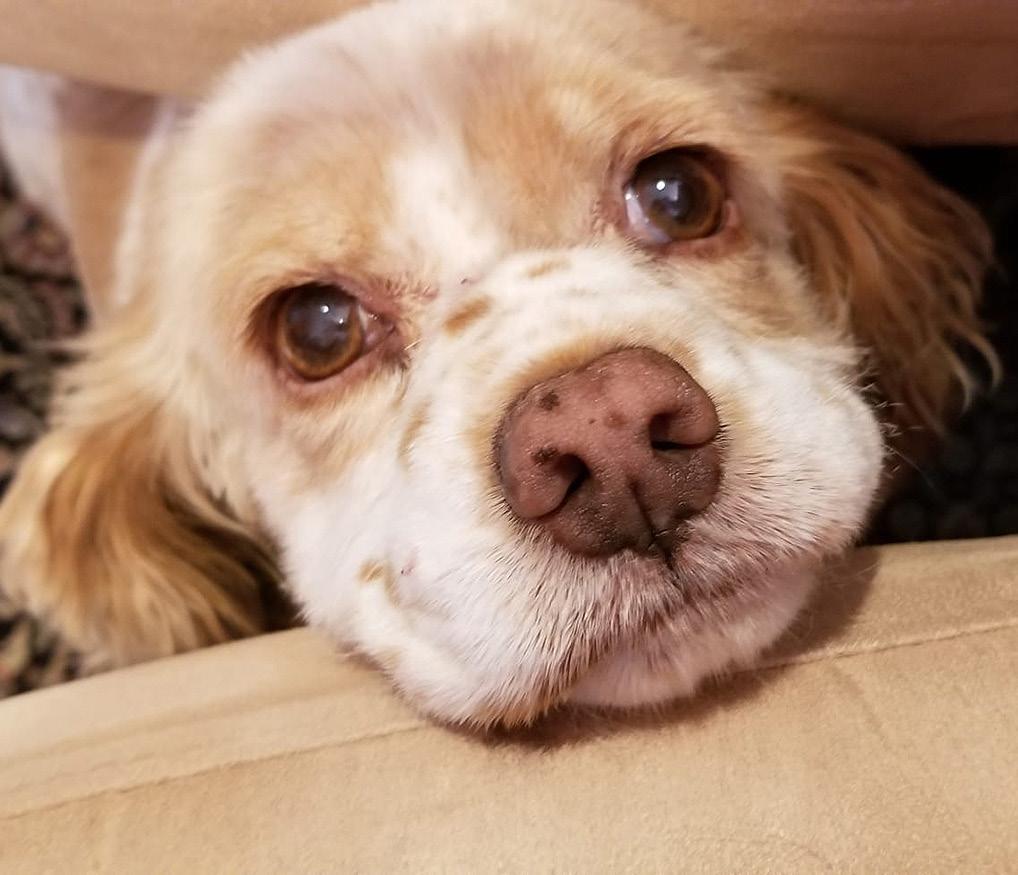

MAUI'S ENCHANTED HIGHWAY: A TWO-DAYS JOURNEY ON THE ROAD TO HANA Jan Wakefiled
80
THE BENEFITS OF EMBRACING THE UNKNOWN by Polly Wirum 84
CHAPTER 3: PROGRESSING FORWARD by Zee 76
Garcia-Morman
THE POWER OF MYTH: MUSINS FROM DEMETER & PERSEPHONE by Dulce
90
FOODTRIENTS SHARES THE SECRET TO HEALTHY AGING FROM BLUE ZONES' REGIONS by Grace
O

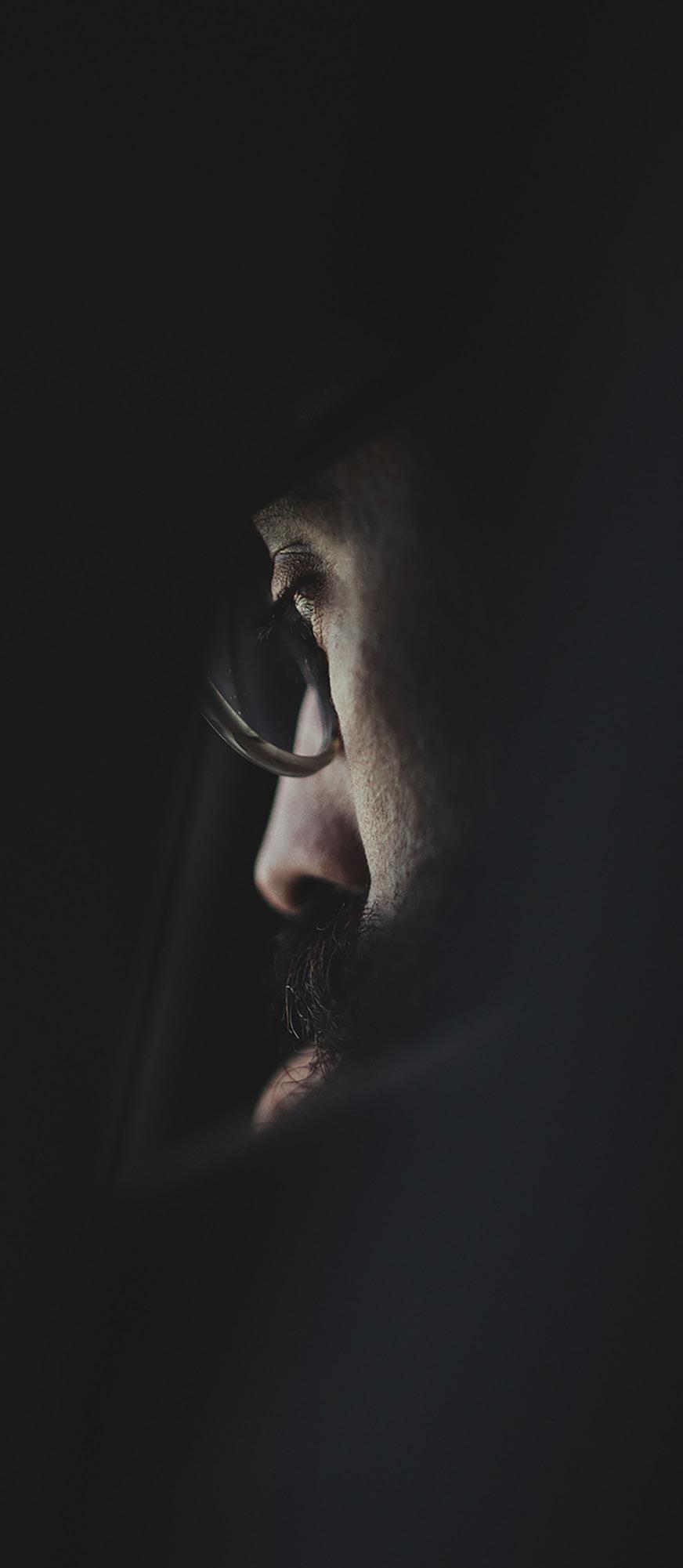



by Dr. Rob Moir
None of us are strangers to the reports of the Gulf of Maine heating 97% faster than the world’s oceans. However, the actual reasons for this can be lost in the constant headlines about global warming and rising greenhouse gases. To explain this extraordinary phenomenon, let’s look closely at four factors: surface seawater temperatures, heat severity, air temperature, and monthly rainfall totals over a five-year span.
The National Oceanic and Atmospheric Administration (NOAA) produces a monthly chart of sea surface water temperatures. Below is the most recent chart for June 2024.


The dark blue waters were 32 to 41 degrees F. The light blue was 54 degrees F. The green water in Massachusetts Bay was about 65 degrees, and the yellow water south of Cape Cod was around 70 degrees F. Note that the surface water in the Gulf of Maine does not have one temperature. Water temperatures across the sea’s face cool from 65 degrees by the shore to 54 degrees in the Atlantic.
These temperatures vary by month during the year. In the next image from NOAA, the top row shows the sea surface temperatures for April, marching back in time from 2024 to 2020. The maps of the Northeast show how much precipitation varies in the Gulf of Maine watershed. The largest river is the St. Johns, which drains the northern tip of Maine. April 2024 was the driest month, while April 2020 was the wettest. Daytime monthly average temperatures are presented. The chart at the bottom shows the 30-year average of right whale density for April. In the spring, we see slight variations in sea surface temperatures, much variation in rainfall, and little change in air temperatures. Right whales are increasing, particularly in Cape Cod Bay and Nantucket Shoals.

May is when we begin to see the surface temperature start to warm.

The lighter blue below indicates warmer surface waters (54 degrees F). The year 2024 shows the warmest waters and the most precipitation. Some may think that rising air temperatures are warming the seas. However, I want to draw your attention to this map of inland heat severity over the last five years, below. This image shows a combination of air and land heat averages. When yearly average temperatures are above normal or approaching dangerous levels, heat is presented in bright red.
The severity of heat has increased dramatically since 2019, especially from 2022 to 2023—hot temperatures peak in the summer. As the temperature rises inland, the Gulf of Maine absorbs more heat.

By June each year, the Gulf of Maine’s surface temperatures by the shore were warmer, reaching 65 degrees F. This aligns with the heat severity map. It’s not surprising that there is a lot of heat around Boston. Increased precipitation resulted in increased surface water temperature.
2020 was the driest month and had the coolest surface water temperatures.

In July, warmer surface water spread further across the Gulf of Maine. The black splotches represent a lack of data, likely due to fog and low cloud cover. The year 2023 was a record precipitation year, with the most rainfall since 1955. It is also the first year with orange (81 degrees F).
July sees hot air temperatures, but this does not warm surface water temperatures. In July 2019, the air temperature was 78 degrees F, which was cooler than in 2023, when the temperature was 74 degrees F.

It’s in the later months of the year that the evidence of warming during summer demonstrates the long-term impact on the Gulf of Maine. October 2021 saw much precipitation and warm sea surface temperatures, while 2019 saw much precipitation but not as great a rise in water surface temperatures. The heat severity map shows that even though it rained a lot in 2019, water temperatures were not affected, as the heat severity was significantly lower that year. The temperature on the land around the Gulf was the deciding factor in surface water temperature.

The warm waters of the Gulf Stream were mapped on the lower right corner for some years, but not others. The Gulf Stream meanders to dissipate energy as it flows northwards. How close it comes to the Gulf of Maine varies monthly.
In July, more notable than in other months, increased precipitation resulted in warmer surface waters. Land temperatures increase with air temperatures. With increased precipitation, more water runs off the land. Heated land surfaces are a factor during the summer months. October 2019 featured lots of rainfall and little change in surface water temperature. This was due to low land surface temperatures.
One Surprising Fix
New England’s seasons vary significantly in rainfall and heat severity. Increased air temperatures have led to high land temperatures. More rainfall, particularly on hot impervious surfaces, flows to spread more freshwater across the salty sea’s surface to warm 97% faster than the world’s oceans.
To cool the Gulf of Maine, we only need to reduce the amount of water running off the land. Slowing the flow retains more water to infiltrate into the land. Moist soils enable plants to grow and draw down more carbon. By increasing the amount of green vegetation and restoring healthy soils, the burden of carbon dioxide in the atmosphere is lessened. The Gulf of Maine will no longer be heating faster than 97% of the world’s oceans.
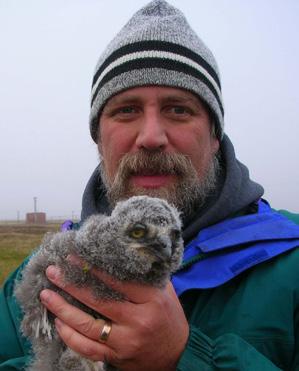
Dr. Rob Moir is a nationally-recognized and award-winning environmentalist. He is president & executive director of Cambridge, MA-based Ocean River Institute, a nonprofit providing expertise, services, resources, and information unavailable on a localized level to support the efforts of environmental organizations. For more information. please visit www.oceanriver.org

In this book, you'll often come across the word "Babylon." You might wonder, what does Babylon mean?
In this introduction, I'll give you a brief summary of what I mean by Babylon today, not the historical context from where it originally came. The Babylon I'm talking about is a systematic program we all know as the government. Babylon is a system with its own institutions, like schools, hospitals, banks, and so on. The media, news, and corporate television are also part of the Babylon system. Babylon isn't just a system; it's also a society. It's become a way of life for the modern Western world. This society reflects
what the Babylon system stands for chaos, confusion, and disorder.
Surviving in Babylon these days is tough with everything happening around us daily. You might wonder how to navigate a society that's so rigid, stuck in its ways, and unwilling to take responsibility for its actions. We face peer pressure from friends, societal trends, the struggle between being popular and not, constant political agendas affecting everyday life, broken families, distractions from celebrities and social media, identity issues like gender confusion, and the list goes on.
"Knowing yourself also means accepting yourself. Many people struggle with this due to what I call a character diversion. This is when someone diverts their true character and behaves with a false sense of self.
You might ask, how can anyone succeed in a society with so many obstacles? Let's start with some basic principles for navigating Babylon.
1 Know Yourself
First, you must know who you are. Without self-knowledge, you can't be consistent in your daily actions, which will leave you feeling complacent. To know who you are, start your journey of self-discovery. This will help you understand how you function as an individual. Ask yourself: What are your likes and dislikes? What motivates you to get things done? What type of people do you enjoy being around? Who do you prefer to avoid?
Can you be yourself around different kinds of people? If the answer is yes, that's great. If the answer is no, let's take a basic approach to change that. First, study the different types of people around you. Then, find a part of their personality or lifestyle that resonates with you and use that to build common ground.
Knowing yourself also means accepting yourself. Many people struggle with this due to what I call a character diversion. This is when someone diverts their true character and behaves with a false sense of self. This isn't healthy, as it creates a psychological barrier in your mind. For ex-
ample, if you act out of character to fit into a certain social circle, you'll start to believe the real you isn't good enough for that circle. This can create self-doubt and make you question your decisions, stagnating your growth and building unhealthy frustration. Therefore, it's very important to be yourself without apologies. Remember, to be yourself is to know yourself.
2. Think For Yourself
To navigate Babylon effectively, you have to think for yourself. This can be challenging, as many people tend not to think independently due to social engineering from social media, TV, peers, and even parents and social circles. Receiving information from others and keeping an open mind isn't a problem. However, if you accept information without questioning it, that can cause issues in the long run. Incorrect information can lead to bad decisions that might have irreversible consequences.
One way to think for yourself is to educate yourself on various subjects. This can change your mindset and help you understand the world and society better. Knowing how people operate will help you move effectively. Let's look at some examples of how you can navigate Babylon effectively.

First and foremost, If you're traveling to work on public transport, like a bus or train, instead of listening to music or watching a video on your phone, take a few minutes to look around. Observe the behaviour of the people around you, see how they interact with each other, and notice how they move. If you do this every time you use public transport, you'll start to see patterns of behaviour. For instance, on your bus journey, you might notice that most people are anti-social, just sitting on their phones and not engaging with each other. If this is a regular occurrence, you'll learn that your bus ride to work isn't the best place to try and socialise. Most people on that journey just want to be on their phones and aren't interested in socialising. This observation will teach you how to navigate public transport more effectively.
Secondly, Make it a daily habit to study your environment every time you step outside, whether you're just going to the shop, taking a walk, heading to work on public transport, or attending an event. In today's modern society, there are many different characters, and understanding this helps you navigate through the everyday chaos of Babylon. For example, whenever you walk in public, use what I call the 180-degree look-around view. This means looking straight ahead, then to your left, back to straight ahead, then to your right, and back to straight ahead again. This practice helps you see what's happening on both sides of you, increasing your awareness.
It's important to understand that many unstable people are walking around in public daily, so being aware of your surroundings helps you move accordingly. Consistently studying your environment keeps you ahead of the average person. It allows you to see how people interact with each other and how they react to situations. This type of awareness prepares you to deal with different types of people and successfully navigate your everyday environment.
Finally, We live in a society that's often uncivil, hostile, and sometimes even violent. One reason for this is that many people don't know how to respond calmly and effectively. So, let's briefly discuss how to move with inner peace in Babylon society. When you step outside, program your mind to be at peace. If you don't know how to do this, here's a simple approach: Tell yourself, "As I leave my house today, I will not commit violence, I will not argue with anyone, I will not react but only respond, I will not cause any problems, I will just go about my business and come home in one piece." Operating with this mindset and attitude will help you deal better with people, including the hostile ones you might encounter in public or at work. For instance, if someone accidentally bumps into you but apologises because they're in a rush, instead of reacting angrily, respond calmly and say, "It's okay." This way, you save your energy and go about your day without added stress.
Confidence is another principle that will help you not only survive in Babylon but also lead a prosperous life wherever you are in the world. In a society that doesn't really encourage individuality, it can be hard to be confident in yourself and your abilities. Many people behave like clones of each other, lacking originality and too afraid to be themselves. They lack the courage and confidence to show their true character. If you continue to live without confidence, it will hinder your growth and progress. You might become jealous of those around you who have the confidence to pursue their goals while you just stand by and watch them flourish. This jealousy can build up in your heart because you wish you had their confidence. But what if I told you that you can be just as confident as your peers? You might ask, how can I get to that level of confidence? Let's explore some examples of how to build confidence in yourself.
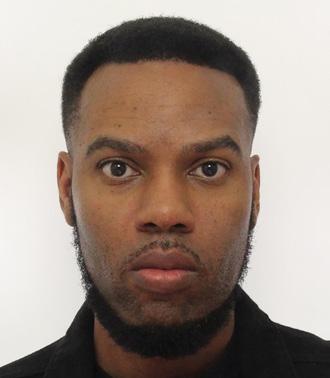
Courtney Sharpe was born and raised in Birmingham, UK, on October 14th, 1983, to Jamaican parents. Growing up as the middle child in a family of six siblings, three brothers, and three sisters, Courtney learned early on the value of staying grounded and level-headed. His keen sense of observation of the world around him shaped his understanding of society, which has become a central theme in his writing. www.courtneysharpe.com

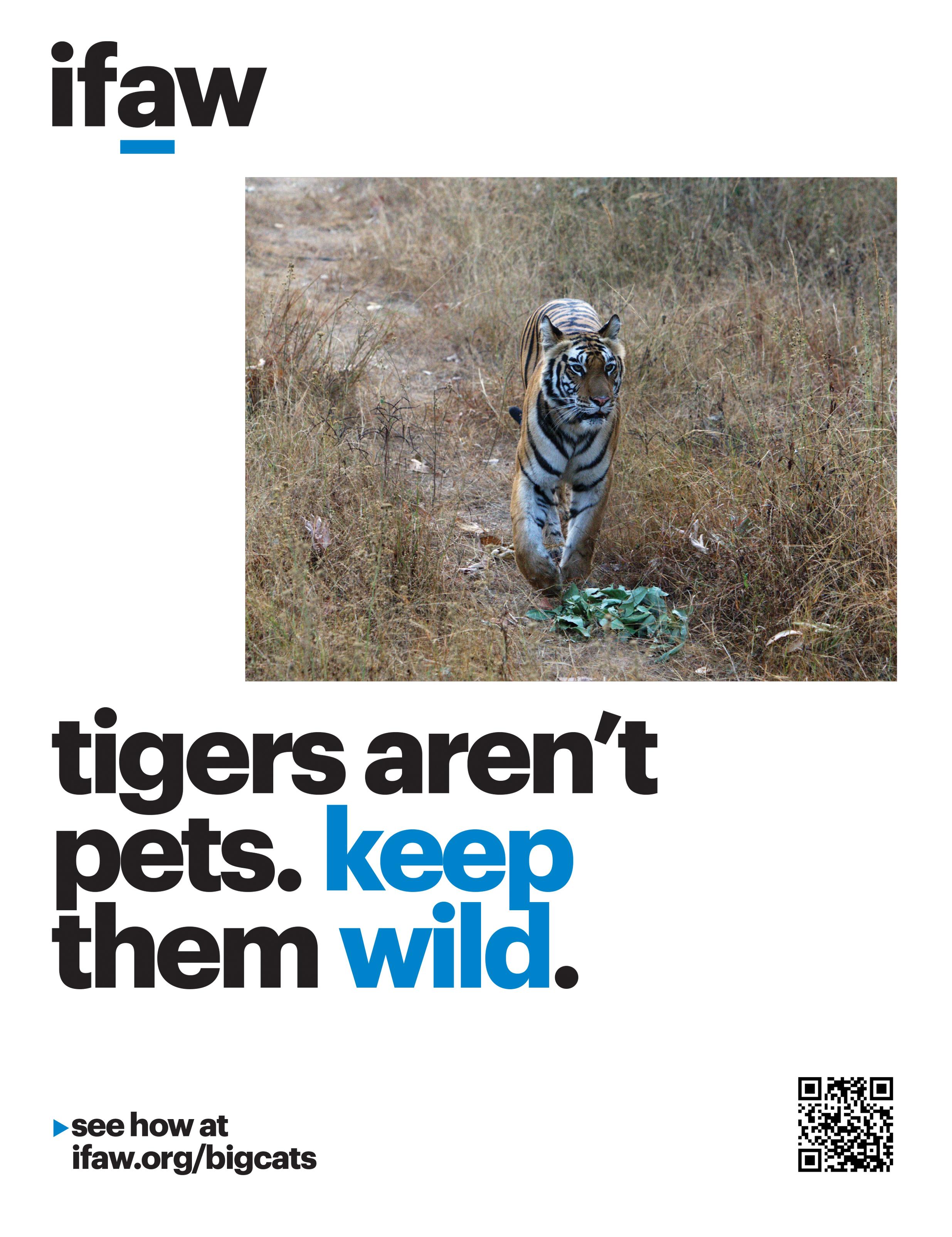

Antonio Lopez Fernandez is a gifted singer, composer, and actor whose passion for music resonates deeply in his heartfelt creations. Known for his soulful voice and profound lyricism, Antiono has captivated audiences with his ability to convey raw emotion and vulnerability. His album, Desde mi Silencio, is a testament to his artistic depth, exploring themes of introspection, resilience, and the power of silence as a means of expression. With his unique blend of musical and storytelling, Antoni continues to inspire and connect with listeners worldwide.
In our interview with Antonio, he opens up about his creative process, the inspiration behind his work, and the challenges he has experienced along the way. He also shares insight into the balance between his acting and singing careers, his influences, and his vision for the future.

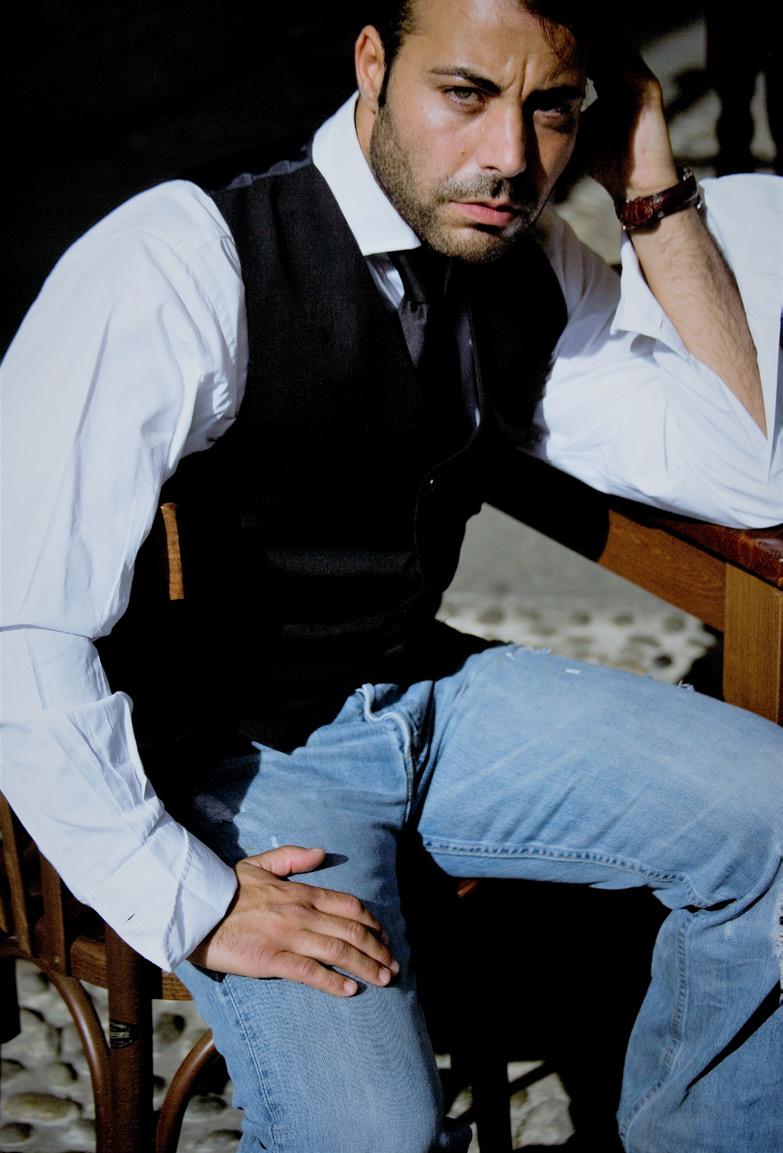
"My greatest challenge as an actor and singer is ensuring my heart is ready to convey emotions authentically.
How did your journey into acting and music begin, and what has been the most defining moment in your career so far?
Since childhood, I've always expressed the emotions of my heart by writing them in a notebook and then turning them into music. When interpreting a text, I loved immersing myself fully in the moment, feeling it, and believing it to truly connect with the audience. My journey into this wonderful world began as a model at the age of 16. I've always believed that fashion, cinema, and music are deeply interconnected. This belief allowed me to travel to many places, meet diverse people, and experience different cultures and ways of thinking, which greatly influenced me. The defining moment in my career came when I was working on a Spanish TV show and had to sing live, improvising on the spot. A producer noticed me and encouraged me to record my lyrics, and that's how I began. Since then, my goal has always been to connect with and transmit my emotions to the audience because the audience is the most important part of any performance.
What inspired the creation of Desde mi Silencio, and how does
it stand out from your previous work?
Desde mi Silencio was born out of a deep need to share my emotions with the world, telling stories of love and heartbreak, unrequited love, and even platonic love. Each song is a simple yet unique narrative that reflects universal experiences we've all faced at some point in our lives. This album is distinct from my previous work because it carries more emotional and sentimental depth.
In Desde mi Silencio, what aspects of your personal or professional life influenced the themes explored?
This album is deeply personal, reflecting my own life experiences. I openly share moments of happiness when I loved, instances where I wasn't loved in return, and even times when I fell for someone who turned out to be unavailable, like a married woman whose secret I discovered by chance. There are also songs about love that exist only in one's imagination. This album encapsulates my life—my joys, my heartbreaks, and my acceptance of love's victories and defeats. When I experienced love, I embraced it fully, and when I lost it, I learned to move on.
When it comes to performing, whether on stage or in front of a camera, what do you find most fulfilling about connecting with an audience?
The connection I feel with the audience fulfills me most when performing. I have the utmost respect for them because they are the reason I can express my emotions. My greatest success is when I interpret a song and make someone in the audience feel something profound. I always say that I don't sing; instead, I interpret the soul's voice.
What would you consider your greatest challenge as both an actor and singer, and how do you overcome it?

My greatest challenge as an actor and singer is ensuring my heart is ready to convey emotions authentically. I overcome this by reliving my own experiences and emotions in each specific situation I'm portraying, staying true to the story and the audience's expectations.
Looking ahead, what kinds of stories or roles are you excited to explore in your future projects?
With the audience's support and permission, I plan to continue sharing my music and performances. I'm also excited about collaborating with other artists and exploring stories and roles that push me creatively while allowing me to connect deeply with audiences.
Questioner: Does God intend human beings to have only one partner in their lifetime? Is it better for a person to maintain an exclusive, committed relationship?
Sadhguru: God may not have intentions for you. The question is: what is the sensible thing for you to do? There are two aspects to this – one is a social one. Generally, they always said “one man – one woman” in order to stabilize society. In parts of the world where they said “one man – several women,” they had to rule with a stronger hand to keep society stable. I will not go further into this.
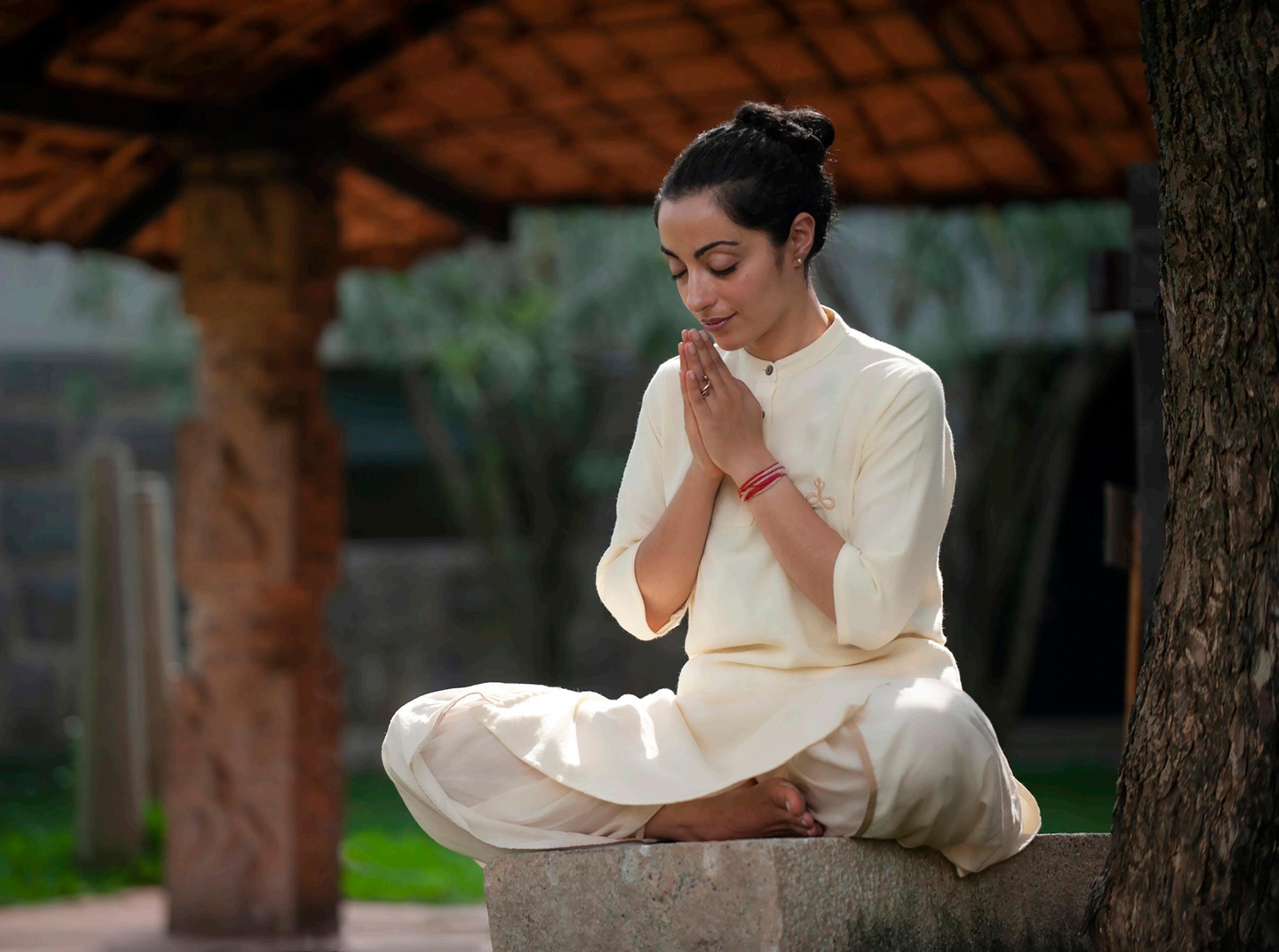
The other aspect is that all substances in existence have memory. Your body still actively remembers what happened a million years ago. Genetics is just a memory. In Indian culture, this physical memory is called runanubandha. It is your memory that binds you to things around you. Suppose you went home and you forgot who your father and mother are, what would you do? It is not the blood or the love, it is the memory that tells you this person is your mother or father. It is the only memory that breeds relationships and bondage. If you lose your memory, anyone will look like an absolute stranger to you.
Your mind’s memory is miniscule compared to your body’s memory. If you just touch something or someone once, the mind might forget, but in the body, it is registered forever. When people have intimate relationships with each other, the mind may forget it, but the body will never forget. If you get a divorce, no matter how much you hate your spouse – still, you will go through pain because the physical memory can never be lost.
Even if you just hold someone’s hand intimately enough for a certain period of time, this will never be forgotten because your palms and your soles are very effective receptors. Whenever
you see someone you do not want to get involved and entangled with, just do “Namaskar,” because when you bring your two hands together (or you bring your big toes together), it stops the body from soaking in memory.
The idea is to keep the physical memory to the minimum because otherwise, taking you to a different level of experience becomes difficult. Those who have indulged excessively in pleasure have a certain grin on their face that is of a leery superiority, but there is no joy in them. It takes a lot of work to get rid of that because physical memory entangles you in a way that your mind cannot even figure out. So, it is very important that you learn to be conscious about what you expose your body to.
There is a price to pay for too much intimacy all over the place – unless you know how to keep the body at a distance from yourself. For such a person, it does not matter what they do. But such a person has no inclination to do such things. They are not compelled by the limitations and compulsions of the body – they are using the body as a tool. Otherwise, it is best to limit intimacy to the minimum. That is why we said oneto-one unless one of them dies and the other one remarries.
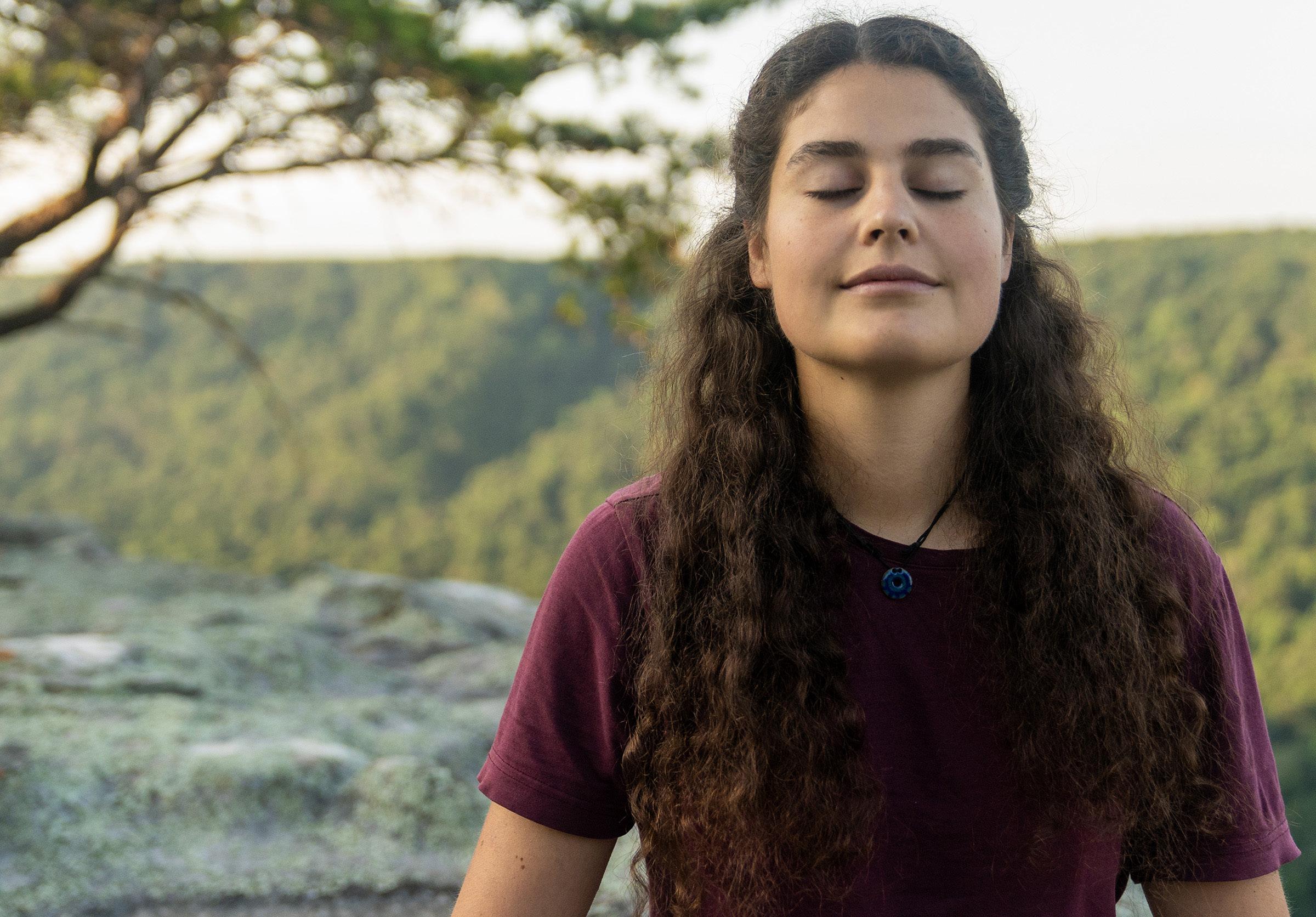
But now, before you are 25, you have had 25 partners – people are already paying the price for that – 10% of the population in the United States is on antidepressants. One major contributing factor is they do not know where they belong, because the body is confused.
The body needs a stable memory – people feel this. Their spouse may not be physically great or intellectually great, and they may be quarreling on the surface, but still, they would sacrifice anything to be with them because somewhere, they understand that this gives them maximum comfort and well-being. This is because your physical memory rules your life much, much more than your mental memory. The very way you are right now is ruled by your physical memory, not by your mental memory. Mental memory can be thrown away tomorrow morning, but you cannot throw your physical memory away. That would require a completely different level of spiritual evolution within you.
Modern science says this, and in the Yogic system, we have always known this: the five elements – water, air, earth, and so on – have a strong sense of memory. If I go to any place that is of some significance on an energy level, I do not ask people about it – I just place my hands on a rock. By being with it, I will know the whole story of the place. Like the rings of a tree tell you the ecological history of the place,
rocks have an even better memory.
Generally, the denser the substance, the better its ability to retain memory, and inanimate substances have better memory than animate life. Today’s technology is proving it – your computer has better memory than you. The human mind is not for memory – it is for perception. The inanimate cannot perceive – it can only remember. Deities and other consecrated objects have been created because they are powerful forms of memory.
In India, there was a time when you could only enter a Shiva temple naked. Only after the British came into the country and started banning all these things we have become very prudish. The idea of going naked to the temple was to take the memory of the Divine into the body. You take a dip and then lie down on the floor with a wet body so that it soaks in the memory of the Divine. The mind looks at other people and what is happening, but the body absorbs the energy of the space.
You can erase your physical memory through deep devotion or certain other practices. I have seen quite a few devotees like this, but one man really struck me. There was a woman who came down south to Kanyakumari, which is the southern tip of India. We do not know where exactly she came from, but looking at her face, probably from Nepal. She just walked around,
“
Your mind’s memory is miniscule compared to your body’s memory. If you just touch something or someone once, the mind might forget, but in the body, it is registered forever. When people have intimate relationships with each other, the mind may forget it, but the body will never forget. If you get a divorce, no matter how much you hate your spouse – still, you will go through pain because the physical memory can never be lost.

Experience Yoga in its classical form at Isha Yoga Center Los Angeles and Isha Institute of Inner-sciences. Established by Sadhguru, the centers serve as powerful spaces for inner transformation and raising human consciousness. Located in northern Los Angeles County and Tennessee, the centers offer an array of yoga and meditation programs in a vibrant and conducive ambience.
You are invited to Free Yoga Day, a monthly open-door event a t the center. On this day, we offer a variety of free sessions dedicated to educating and empowering individuals to take charge of their well-being through simple but powerful practices sourced from the Yogic tradition.
Learn more at ishausa.org/la

never uttered a word, and always a bunch of dogs were following her. She would even steal food just to feed these dogs, and many times, she was beaten up for that. But then, people would sometimes find her floating on the waves. This was a coastal town where three oceans meet. She would go to the beach, sit cross-legged on the water, and float around. Then, people started worshiping her. When she came, they would still protect their food, but they could not beat her anymore because she was something more.
Her whole life, she had lived outdoors. She slept on the street or on the beach without any kind of shelter. She had a completely weather-beaten face. Towards the end of her life, when she was over 70, a famous southern Indian musician saw her and became her devotee. He brought her to Salem, Tamil Nadu, and built a small house for her there, and a few devotees gathered around her.
About 15 or 16 years ago, I happened to be in a hill station near Salem. There, someone told me about this woman –her name was Mayamma. She was already dead by then. It was a full moon night, and they said there would be a pooja at Mayamma’s samadhi. I drove down with my wife and daughter, who was just about five or six at that time, to spend the evening there. It is the most unimpressive little place – a concrete samadhi. When I came there, it just hit me in the face – the very energy of that place was like an explosion. As we sat there, hours flew by. Later, there was a free dinner. A devotee of hers was serving us food. I looked at this man’s face and I could not believe it – he looked exactly like her! He was a southern Indian man, but he looked like a Nepali woman. Out of devotion, his face had become almost like hers.
If you erase your physical memory, your body will become like that which matters most to you. The very shape of everything in you will change. That means you get rid of your genetic compulsions. When someone takes sanyas (monkhood), the first thing is to do
a certain process for the parents and forefathers. Normally, we conduct this process for the dead, but for sanyasis, we do this even if the parents are still living. Not that we intend them to die – the idea is to wash off one’s physical memory.
When you were 18, you might have rebelled against your father and your mother, but by the time you are 45, whether you like it or not, you begin to talk like them and act like them. It is not just your parents – your forefathers are acting through you right now. Your behavior is generated and controlled by them. That is why, if you become serious about the spiritual process, the first step is to distance yourself from your genetic memory. Without doing that, you cannot get rid of the compulsions of your forefathers. They will live through you and rule you in so many ways.
When the memory of the body rules you to such an extent, it is better to keep it to the minimum in this lifetime. After all, you still have to get rid of a million years of memory from your forefathers. You have a reptilian brain – the crawling snake and the lizard, and even the scorpion still live through you. Do not think the brain is the mind – the brain is the body. At least in this lifetime, you want to limit these impressions so that your body does not get confused.
People who were aware of this context created spiritual processes in such a way that the body would become most conducive. Everywhere in the world, it is understood that if someone gets very serious about his spiritual process, the first thing that he does is keep away from all kinds of relationships because if he builds any physical relationships, naturally, it will complicate things. Only if he is either so compulsive that he needs it, that you cannot take him beyond that right now, or he is so free that he does not identify with the body, we let him have it – otherwise, we generally say no. But if you must, at least stick to one body because too many will confuse the physical system.


An interview with Dr. Veronica by Dina Morrone
In a world increasingly focused on holistic health and well-being, Dr. Veronica McBurnie, Clinical Director, Founder, Family GP, and Specialist in Integrative Medicine, stands out as a pioneer in integrative medicine.
Born and raised in Glasgow, Scotland, Dr. McBurnie’s journey from traditional family medicine to groundbreaking approaches in DNA analysis, gut microbiome research, and energy medicine has redefined how we think about healing. As the founder and Clinical Director of a renowned wellness practice, she combines her expertise in conventional medicine with cutting-edge methods, including homeopathy and the Frequency Treatment.
In this exclusive interview with The Eden Magazine, Dr. McBurnie shares her inspiring story, her vision for the future of medicine, and how a truly integrative approach can empower individuals to live healthier, more balanced lives.

When did you choose medicine as a career path?
That’s an interesting question. Looking back, I think medicine chose me.
I grew up in the west of Scotland, the daughter of a dentist and a teacher both of whom had come from very humble beginnings and had to work very hard to carve out their professional careers.
On graduating high school in 1985, I was somewhat torn between following my heart or my head. Head -- Glasgow University Medical School or Heart -to audition for one of Scotland's many prestigious and esteemed music institutions, following my lifelong passion. I followed my head, having no idea that my heart would also find a way through.
At that young age, I had no idea that the choice was actually not going to manifest as one or another nor that they would be mutually exclusive. On paper, Medicine and Music may sound like divergent paths, reminding me of a very famous Scottish song – “You take the High Road, and I'll take the low road,” but they are linked more than anyone might imagine.
I have always been interested in the mind-body connection, what makes people tick, why some people get ill, and why others don't. As a child, I could feel people's energy, both negative and positive, and I could see that it was somehow linked to health. I have always been fascinated by my fellow humans and our purpose here on Planet Earth.
Then, only a year or two into my professional career, after playing the piano on a Sunday for pre-op patients from my surgical ward in what was the old hospital chapel, I had an enlightening moment of clarity ... in short, a realization that music draws on your soul, your emotions and your energy. Music can make you feel good! I wanted to harness this somehow in my treatment plans for those willing to explore.
If you love music, you love life! I now combine my love of music and
its qualities for mood enhancement, togetherness, and calm, soothing energy into suggestions and recommendations I make to my receptive patients. I have observed how music can be very effective when interwoven into any medicinal treatment program. We have observed time and again the role of music, in particular singing, as a bridge to therapeutic healing.
How do you combine music, sound, and medicine?
In many circumstances, the combination of music and medicine can be extremely effective, whether formally as part of a unique and tailored treatment plan or informally as a complimentary component alongside some of the other bespoke treatments we recommend for our patients.
Singing is a lifelong passion of mine and something I enjoy sharing and facilitating for others. When we sing, we are the most authentic version of ourselves. Singing is one of the best ways to link our minds, bodies, and hearts, express ourselves, and unite as one. Before humans learned to speak, language would be just a simple tonal sound. People used to communicate in song before words came along. Even now, for some, it is easier to communicate in song than it is with the spoken word.
Singing opens your heart and encourages a body state called heart coherence. A study by the British Heart Foundation shows that when people sing together in a choir or a group, their hearts start beating in synchrony. Singing connects us to ourselves and others and helps release the happy hormones of oxytocin and dopamine, which help facilitate the healing response.
I have a piano in my consulting room at Westbourne Studios, and many patients will come in with anxiety and other issues. Depending on the patient, I will ask if they have ever tried singing before, and wherever possible, I will encourage a little singing together with the piano. I had one lady in particular who was so nervous about having an operation.

Her blood pressure was sky-high. She came to see me and said, "Oh, I don't get out anymore. I don't feel like doing anything. I used to be in a choir, but now I am so concerned about my health that I am unable to do the smallest task." I then suggested we try a little singing together. She looked surprised but agreed, and after playing some simple, fun melodies on the piano, she began to sing. I could see and feel her whole demeanor change before my eyes. She floated out of the room at the end of the appointment, much to the astonishment of her husband, who was in the waiting area and could only ask, “What exactly happened in there?!"
Feedback, in general, has been extremely encouraging. Clearly, this is not for everyone, but where there is a will, openness, or intrigue, we find that the level of opt-in or willingness to learn more or observe or participate via a very gentle induction has a very healthy uptake and sustained participation. When it's appropriate, and it clicks, it's an emotive, engaging, and powerful asset in Westbourne Medical Studios Portfolio of core offerings.
I also run some charity music work-
shops every week. I work with a group of people who may have had a tough day, many of whom do not have the easiest of lives, but when they sing together, the powerful energy they create raises spirits without fail. Singing something simple together, creating coherence and harmony, can change even the darkest of days, and standing directly in front of that at the receiving end of these frequencies is a wonderful privilege and a powerful emotional release. It is an all-around healing, two-way experience, and I love doing that. I can see and feel music as an effective healer. Without fail, after each workshop, everyone leaves in a different state. I was recently at a public event when a lady came running up to me after dinner to tell me that she had enjoyed the workshop so much that she had never ‘felt her heart so full” as when she was singing in one of the workshops with us.
I always say to people that it is not my magic; it's your magic. You bring out your own magic when you sing. You are communicating from your heart. Singing is the true bridge to therapeutic healing.
" If you love music, you love life!
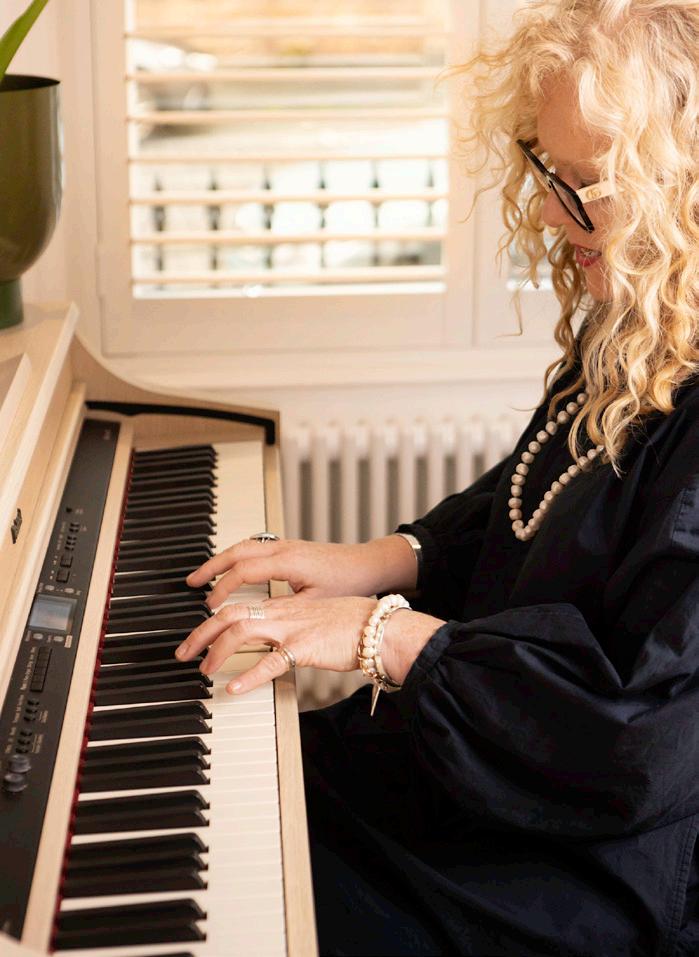

Besides sleep, another important question I ask my patients is, "What brings you joy?" It takes people by surprise. Many people don't have an answer for a long pause. It's interesting. Sometimes, I rephrase it a little: "What do you enjoy doing that brings you joy in your heart?"
Tell me about Frequency Medicine, Treatments, and Frequency Bowls. I initially learned about frequency medicine in 2016 from a Dutch scientist who was engaged in helping the Brazilian government tackle the Zika virus outbreak before their Olympics in 2016. Surprising as it sounds, this is not a new phenomenon as we use frequency all the time in medicine, whether it be an ultrasound to heal or break up a bruise or radiotherapy to tackle a tumor. Each frequency is an energy wave that has a unique value. Then, each emotion and every signal from the brain to the body would have a particular value or frequency wave of its own. With this understanding, we are beginning to look at treating people using frequency as a signal to promote healing.
A turning point for me was when a family member became quite unwell with emotional difficulties and anxiety; they were not responding to conventional treatment, and I decided to take them to The Netherlands to explore frequency medicine as an option to help their brain heal. It was an honor to visit this incredible clinic who were working with cutting-edge, non-invasive treatments. After being given a tailored prescription of frequency, which he had to be listened to on a daily basis, this family member returned to full health in six weeks. I then decide to spend some time studying this approach to medicine and how to use frequency to help my own patients with their emotions and their brain health. I now use frequency medicine as one of my important tools for emotional health and well-being, in particular for depression and for people with all sorts of anxiety issues.
In Westbourne Medical Studios, we have invested in some progressive technology that allows us to take a scan of the speaking voice, which has many unique frequencies therein. When we speak as our authentic selves (i.e., unless we are performing to an audience), the frequencies in our voice at that time can offer an insightful scientific
window into our emotions and how our brain is firing and wiring. You can link this insight through the frequencies to the brain and brainwaves and then build a bespoke frequency prescription for the patient. I love doing it. I say to them, "Look, this is cutting-edge technology. And I am keen to try to help you. Do you want to have a try?” It is so important not to promise anything you are unable to deliver. Patients understand that this technology is so new and exciting and are keen to have a go. It is often used for patients who don't want to take medication for some mental health disorders, and I get some pretty good results.
Energy is all there is. It just changes from one state to another. As I said above, frequency has been used in healing for years. That’s what Ultrasound is. The physiotherapist will ultrasound a bruise or a deep wound, sending frequency into the wound to heal it. Radiotherapy is also a form of frequency for cancer patients. Everything is frequency. Everything is energy. It's not difficult to imagine then that frequency can heal.
I now run a monthly charity - sound medicine evenings - where people come and relax in our yoga space and are immersed in sound frequencies.
You hold a position of responsibility when you use the bowls. You can't just sit in front of someone and bang on bowls. You must take your time, be aware of who's in the room, and read the room, constantly adjusting things to reach optimal sound. Whether using a bowl, the human voice, or another instrument, each frequency has an effect on the person's emotions, and all those emotions are very much linked to our body and physical health.
How did the Westbourne Team come about? How long did it take to make it a reality?
I always dreamed of opening a medical center that was truly holistic and embraced all forms of healing and health.
A career in medicine affords you many privileges, and I had the privilege of traveling all around the globe for work. I've learned that medicine can be so different, depending on where you are, and it's not just a case of following the flow diagram and reading the rules. Evidenced-based medicine is, of course, of paramount importance. Still, the body has the capacity to heal itself in many different ways, and an individual approach to health is what we aim for at The Studios.
I am an experienced family physician with over three decades of training and have dealt with most medical situations from birth to the final days of life. I always wanted to have a clinic that offered a truly integrative approach for every patient encompassing as many forms of healing as possible... Throughout my career and my scientific background, I would struggle to find an explanation as to why one patient who had a tiny little speck of cancer would not survive more than a week or two while another who was riddled with cancer would still be alive after many years. How could this be? How can two people have the same diagnosis, the same prognosis, and have a very different outcome? What are the factors? What influences this? How could this be rationalized?
Until recently, I spent all my working life in the National Health Service, and I still do whenever I can, as it never felt right to walk away completely. Unfortunately, the constraints and never-ending demands of this system do not enable you to have the time to offer a truly therapeutic consultation. One of the most important things you can give people is your time and energy to allow them to feel heard and open a space to allow people to heal. This is why all new patients at Westbourne Studios have an hour-long appointment whenever possible.
As far as putting the team together, I picked my team as I went along. Some were people I had worked with in the past. For example, I worked in a prison in Bermuda. I was the last doctor in their old prison and the first doctor in the new prison. I worked in an old Victorian prison in Glasgow called Barlinnie. I was
good friends with one of the nurses and told her that one day, I would open my dream clinic and would ask her to work alongside me She smiled and agreed... time moved on, Life moved on. I had my own challenges in life to face, like anyone else. Through no fault of my own, I found myself in a difficult financial position, bringing up my children as a single working mum. Then, after the sudden passing of my mother, I came to realize that life was not waiting for me. I had to go out and do something about it. It was now or never...I gathered the funds, and then, by some miracle, the perfect building appeared, and Westbourne Medical Studios was born. I then called the nurse with whom I had worked at the Glasgow Prison and asked her if she remembered her promise. She subsequently left her job and came to work alongside me at Westbourne and has been there ever since ...one of the admin team is a former receptionist from my trainee days, and her sister joined us as housekeeper (believe it or not, having previously worked for the Royal Family in London)! I then gathered many wonderful healers and therapists and began putting the Westbourne family together.
A major inspirational character for me was a lady named Anne Shearer. She founded the Phoenix Centre in Glasgow, a center way ahead of its time that offered yoga, stress management, and meditation long before it became fashionable. I used to visit her regularly to study the art and science of correct breathing. I had no idea that we eliminate around 70% of our body’s toxins through breathing. Breathing correctly involves breathing both in and out through our noses as we did when we were babies. She also taught me so much more about following my dreams, creating my own space, and how to move your vision forward and make it a reality.
She was a real inspiration for me. Although Anne is sadly no longer with us, her right-hand lady, Heather, an artist and psychotherapist, comes to work at Westbourne, offering breath work to all our patients. Proceeds from the appointments go to a breathwork charity they founded together called Trust Your Breath.

Bringing the team together was like calling the elders of the tribe. I said, "Let's make Westbourne a beacon of light. Let's make this a place where people can come and heal." It was never just about being a private physician. Business, in that sense, was never my passion. For me, it has been about having the space and the means to run a truly integrative and holistic medical center which also benefits the community at large. We have drop-in meditations at lunchtime on Wednesdays and a community music group that plays once a month. We run yoga classes and charity sound bowl evenings; we even have a monthly cinema evening where we show inspirational movies on our cinema wall.
We have so much going on. I want it to be a place where people come and understand that healing is possible. It's not all about coming to visit the doctor simply for medication…I see it more as a place where we support patients to be the very best version of themselves and walk with them hand in hand to provide them with the tools to thrive in a state of optimal wellness.
You mentioned the word bespoke. That’s not a word you hear associated with the medical field. Today's medical care has become so impersonal. Patients are numbers. Why did you choose the route of custom-made individual care for your patients and in your medical practice?
Having a bespoke practice is, to my mind, essential as everyone is a unique individual and deserves to be treated in that way as much as possible. How can you apply the same mathematical rule to everybody and get the same result? You cannot because we are all genetically different, so we react differently.
Patients need time to be seen and heard in a therapeutic space, which cannot happen with a short visit. My interest lies in the truly integra-
tive mind-body approach to medicine, in the process, changing the whole health model that we seem to have accepted nowadays.
Tell me about Walk the World Moving Meditation.
Any form of meditation is about connecting with yourself - mind and body - in a state of mindful awareness.
Stress is the cause of most diseases. When you are stressed, the autonomic nervous system is in fight or flight, and your brain waves are in survival mode. Our brains operate on various frequencies, some fast and some slow. Every brain wave has a frequency, and every emotion has its own frequency.
When you are in this state, otherwise known as survival mode, you cannot repair, create, or do anything to make your body more whole and complete. Significant blood flow leaves the frontal lobe to supply the muscles. On the other hand, when you are resting and relaxing, that's an entirely different matter. That's when our bodies repair. That's when our creative forces come into play.
Mediation, however, brings us to a place of deep relaxation, allowing our bodies to regenerate, repair, and renew themselves. In our fast-paced world, we often become addicted to the stress of “doing” and forget the importance of simply “being.” Meditation is a practice of letting go.
There are different types of meditation, including lying, sitting, standing, and walking. A walking meditation allows us to be fully present, moving mindfully without thought, ideally in a peaceful setting like a beach. It is a powerful way to restore balance, enabling the body and mind to experience positive change.

What challenges do you face when working with patients who are skeptical about your approach and alternative treatments? I want to say that I don’t necessarily see these treatments as “alternative.” We should call them complementary. If the patient is at the heart of the consultation, then all well-researched and scientifically proven treatments may have a role to play. The whole point is that it's not either one or the other for me. Let's bring all potential solutions to the table to see how we might tackle a problem. We have several ways of doing this.
Some patients have a set idea of why they have come. Others are looking for guidance and for me to devise a highly individualized plan to help them on the road to a healthier life. I enjoy making joint decisions with patients when formulating any treatment plan incorporating all lifestyle aspects of care and any healing modalities that might suit them on their journey.

What about nutrition and health? Many medical schools do not place enough emphasis on nutritional well-being. We are literally what we eat, but we are also what we absorb. How often do we enquire about our gut microbiome? How often are we aware of what is happening in our body /what are we putting in our mouths? Everything we eat is a building block for the next red blood cell, nerve cell, or muscle cell. If we thought about this every day, we might make wiser choices when it comes to eating.
Every stem cell has an incredible innate intelligence. How does a cell decide whether to be a kidney, an eyelash, or a fingernail? It is truly fascinating that our bodies have this capacity for growth and discernment. Everything we consume is a building block for that. It is not about having a rigid or fad diet. It is about the importance of recognizing what might work for us. When it comes to eating,
inner wisdom and knowledge can go a long way. The mind-body connection is crucial. It is simply a matter of listening to your body and asking it what it wants. Am I thirsty? Am I hungry? If you have a hunger signal then, then what do I truly desire and need? Much of the time, we mistake thirst for hunger, and this can lead to the wrong choices being made. Adequate Hydration is a key factor in the health of every cell.
What about patients who can't afford the treatments?
I did not open a private clinic because I wanted to be a money-motivated entrepreneur.
I wanted to open a private clinic to create a truly healing environment with sufficient time and means to offer patients the chance to be heard and nurtured as best I could.
We offer varying fee ranges. I like to see all my new patients for an hour, but sometimes, this is not possible, and if a patient asks to see me for a shorter time, we will honor this. Patients can book an appointment with me or with the nurse consultant on a different fee scale.
Westbourne Medical Studios is open to everyone, and we hold many free community and charity events, including a drop-in meditation sessions and sound evenings, creative art classes, and a community cinema wall every month. When people come to see me, I love to see them, but it's not necessarily all about booking numerous return visits. I want to teach patients how to breathe correctly, how to meditate, correct nutritional advice, cold water bathing, and much more, as these are all great tools we can share to empower our patients to thrive and reach a state of optimal wellness, and live life to the fullest.
Of course, I also write out the occasional prescription too but that's the beauty of combining all skills for the best possible outcome.

What do you want a new patient to feel when they come to the Westbourne Medical Studios for the first time?
The studios are located inside a beautiful 160-year-old stone building. I want everyone to feel loved, nurtured, and the most important priority when arriving. As you climb the broad stone steps bordered by plant pots filled with fragrant herbs and tumbling flowers, you enter the foyer filled with more greenery and artwork alongside the flickering flame of a welcome candle, signifying our light and yours. As you enter the original doorframe, you are greeted by the friendly front-of-house team and seated by the log fire with a cup of herbal tea while beautiful music plays and essential oils gently burn in the background. There are three studio clinical rooms and a small and intimate massage space called The Sanctuary. And a beautiful general studio space where we hold yoga/breathing/movement/singing classes for up to 10 to 12 people. This space also has a cinema wall where we show community cinema films. We also have a residential area below where clients can come and stay for the weekend if they are having a series of treatments or a retreat day.
We have had patients come for the weekend to have a retreat day. There are three double bedrooms. You can have a retreat day, be pampered, have quite an intensive weekend experience, and then go home again. We also have something called Soul Food Sundays, where we have a cooking demo, and then we will sit and eat together.
Being the first person to open something new can be quite scary, especially when We, as physicians, are bound by such strong regulations. We are governed by the National Health System, and we are inspected within an inch of our lives to ensure we meet all necessary regulations. Thankfully, when we opened, we passed our inspections with flying colors. Scotland is a country full to the brim with innovative thinkers -- James Watt, Alexander Graham Bell, John Logie Baird, and Alexander Fleming, to name but a few. I am not claiming that Scotland is the only place with holistic health, but I am saying that, as a conventional doctor, it was quite a big step to open a new clinic with a different health model from scratch.
What about patients who cannot visit your practice in person? Are you able to do some of these treatments by phone? On Zoom?
I have clients in Los Angeles, the Caribbean, and Australia, to name only a few locations.
My patients are from a broad age group and demographic and increasingly international as well as native Scots. On an average day, I could see a sick child, an aging senior, or an over-stressed, overdoing it, permanently jet-lagged 40-something who needs to be told politely that they do need to calm their jets.
I'm also increasingly being requested to treat patients from the entertainment industry, be that list touring Pop or Rock Stars, or major movie production and TV location shoots that are drawn in by our beautiful mountainous and dramatic scenery. They all think it's funny now as they know I sing and call me the Rock Doc. Of course, I take no notice of such frivolities, and I am wise enough not to state in print that deep down, I do quite like it.
The new age of Zoom and video communications has opened up all kinds of possibilities. One of the most important aspects of any consultation is that patients have a space where they can be themselves and feel nurtured and heard. There is so much therapeutic healing that can happen in any consultation, even on video. Many of our therapies are available online, and I am also delighted to be able to work with the local physician on the ground and liaise with various treatments in that way, too.
We can get lab tests done anywhere, so we can do quite a lot, even if it is long distance. We can even do meditation work online.
One of the most important questions I ask my patients is about their sleep. Sleep is so important. If we don't sleep, then we don't repair. That's another time when our brain goes detoxification rinse a bit like a car wash for at least one, if not two, cycles, so sleep is essential.
Besides sleep, another important question I ask my patients is, “What brings you joy?” It takes people by surprise. Many people don't have an answer for a long pause. It's interesting. Sometimes, I rephrase it a little: “What do you enjoy doing that brings you joy in your heart?”
If we have joy in our hearts, then we are the best version of ourselves and share our best assets with everyone else. Then, when our light shines brightly, so does everyone else's.
Please share with us a case where you've seen remarkable improvements in healing in one of your patients that traditional medicine couldn't achieve. I have a patient who was a dancer and had suffered many diverse life events. She presented to me with very swollen joints, and she was on maximal drug treatment for rheumatoid arthritis. She was very depressed at her lack of mobility and could hardly walk across the room, never mind dance. She had one knee that was twice the size of the other and was resigned to a life of increasing doses of potent medications to help battle her immune system and try to reduce the reactive swelling.
We talked through many things - what made her heart tick – and what brought her joy. We addressed with care many of her sorrows. She was keen to come off some of the medication. We began a long journey of mind-body exploration and connection. We used some breathwork. She learned to meditate. She completely changed her nutritional intake. She believed she could make enough positive changes in her life to allow her body to reconsider the healing process. She worked so hard on her stress levels and to release much trauma from her past. She never gave up believing that it might be possible. Slowly, slowly, and of her own volition, she started to come off her medication with the help also of her rheumatology specialist. Slowly but surely, through her hard work and determination, her mind-body connection was so strong that her body decided to make a U-turn.
After a year, she skipped into the consulting room and said, "My rheumatologist can't believe it. I'm now off all my
medication. I feel so good."
One of the most important things is to allow people to believe that healing is possible. This is not about giving false hope. I don't believe there is such a thing as false hope. The message is that there is only hope. At the same time, it is so important not to make false promises you cannot be sure you can keep. You mustn't put your ego out there. That's wrong. I offer to walk with the patient on their journey and turn over every stone in an attempt to help find ways to support them in thriving and believing they can reach their potential to be the best possible healthy version of themselves.
My first question to the patient might be, “Do you believe it's possible?” Because if a patient doesn't believe they can be well again, that is the first barrier to any healing.
I want to work with people and help them believe that much is possible, be open-minded, and try again to look for the key to their wellness. If someone needs an antibiotic, they need an antibiotic. If someone needs a chest X-ray or an MRI scan, I'll order that. It's not like I'm saying let's leave everything behind, dance into the woods, and eat herbs. It's about saying let's look at what's possible. What do you want out of this? Do you believe you can be better, and what do you want from me, and can I deliver?
Singing is a lifelong passion of mine and something I enjoy sharing and facilitating for others. When we sing, we are the most authentic version of ourselves.
Singing is one of the best ways to link our minds, bodies, and hearts, express ourselves, and unite as one.
Special thank you to:
Dr. Veronica McBurnie https://www.westbournemedicalstudios. com/team/dr-veronica-mcburnie/ Photography by: Matt Marcus mattmarcusphoto.com

When a new patient comes into your practice, are you the first person with whom they visit?
Not necessarily. We have different options for patients. They can book directly with a specialist consultant, a nurse, or a therapist. Although I love to know all the patients who register with us, I still see most patients first myself.
Once I have seen a patient, I send an email for them to ponder, outlining my thoughts on the day. The patient is then invited to reply and see what they think and how they would like to proceed.
How do you balance motherhood, a successful practice, traveling, and finding time for yourself?
It can be tricky, especially when my two boys were young, but they are grown up now. They are wonderful young men. One is 20 years old and is at university, and the other is 22 and traveling the world after graduation. Over the years, I have enjoyed taking them around the world and showing them different things. I taught them the importance of connection to themselves and to others to make friends wherever they go because we are all just one big family in this world of ours.
I also have two dogs. Roxie Hart is a fifteen-year-old rescue cocker Spaniel. The other dog is five. He's a shaggy brown Springer doodle called Hugo Bear. He looks like a shaggy brown teddy bear. They are both just beautiful beings. Work Life balance becomes easier when you love what you do because then it no longer feels like work.
I practice meditation daily, which keeps me alive and thriving.
Where are some places you wish to travel and possibly open a practice or partner up with another medical practice?
I would love to partner with like-minded people around the world. I have a great affiliation with the United States, both West and East Coast. I have friends in New York, and one of them is a nurse with whom I worked. She now runs
two hospitals in New York and loves the model that we have in my practice. We've talked about whether we could open something over there. I don't know Los Angeles well, but I have many clients from there, so it would be nice to do a clinic there.
I would like to have another clinic in Europe and one in London.
What do you enjoy doing in your spare time to decompress?
I love walking my dogs, singing, being with friends, and cooking lovely food. I love cold water swimming. It's one of my passions. Swimming in the ice, swimming in the snow. It's so good for you. I love going on meditation retreats. I love swimming in the sea. I love being warm. I love traveling, meeting new people, and experiencing brand-new things I've never done before.
Is there something you do privately that few people know and that you would be willing to share?
I love to sing opera in the kitchen while cooking, but I don't do that when anyone's in the house and try to spare the neighbors!
Would you like to share any closing words or address something we have not covered?
I am so excited to see what the future of healthcare can be. If physicians accept that a healer doesn't have to be someone in a yurt smoking a pipe and that the simple act of accompanying someone on their healing journey with an open heart and a genuine desire to support and nurture using all the tools they have in the box is enough.
As Physicians, it continues to be a privilege to have anyone come to us to seek help and advice, and it is our duty to honor and respect that at all times.
Approaching each new day from a place of gratitude and wonder is a great start for a happy, healthy existence.
Thank you so much for asking me to share our story with your readers.


by Feroze Dada

Here is how the story begins:
Chapter 1. SPIRITUAL ENCOUNTERS. Silence. In your breath, I will find you.
As darkness fell, Lily sat in bowed silence in the medieval chapel at La Verna in Italy.
She didn't smell the sweet scent of the calla lilies and white roses decorating the nave or see the beauty in the sacred icons in the stained-glass windows. Her mind was firmly imprisoned in the past.
The fingers of her hands were white with cold when the nun materialised in the stone doorway as if from thin air.
Dressed in a white tunic that swept the ground, she moved soundlessly toward her. From a distance, it appeared as if she was floating a few inches above the floor.
Her hands were hidden beneath the long flowing sleeves of her habit, pressed against her slender waist decorated with a simple belt of black woven wool. Her face was masked by a long black veil.
Lily stumbled to her feet. She didn't know how long she'd sat there; she'd lost track of time. Perhaps she was coming to tell her the chapel was closing …?
Two wet trails ran down her cheeks, evidence of her grief, and embarrassed, she roughly rubbed away her tears.
I'm sorry. What...?
The nun raised a finger, urging her not to speak.
At first, she thought she heard the sound of the wind outside before realising the nun was saying her name.
Lily... Li…ly…Lil…ly…’
She knew her name! It meant fertility despite her childless life since the loss of her newborn child, Ruby, a beautiful baby girl with emerald eyes and golden hair, ten years ago.
I need to tell you…Change cannot happen without upset and disturbance. It's vital you go inside, to a deep place of peace that rests within us.
Her words were like gentle caresses. But Lily flinched as if she'd been struck. How did she know about her upset and disturbance? What could this stranger know about the sadness she carried? The sorrow she'd lived with for so long…
A familiar wave of suffocating black grief rolled across her chest, making her gasp. The day she gave birth to her child may have been a decade ago, but the grief was as fresh as the day she'd held her for the first and only time in her arms. Her heartache keeping her separated from the joys of the world. Her barren life was a sorrow to bear. How she ached to hold that tiny girl…willed her still heart to beat…
The nun was metres away now. Her face shielded behind her habit. A sense of urgency in her voice.
I can give you the knowledge to access a place of peace. A gift you can then share with others.
But who are you? Lily's voice trembled. No one knew she returned each year to this place to remember her child whose life on Earth had been snatched away far too young.
'Sister Miriam.'
'How do you know my name?'
The nun laughed, sitting down next to her on the wooden pew.
I know you well; I'm here to guide you.
Lily frowned, puzzled.
The woman was so close she could make out her face, a grey shadow behind the lightweight cloth.
I'm your spirit guide. Here to reveal to you the secrets of life on Earth.
Are you ready?'
Lily nodded slowly.
Then I'll begin.
Our breath holds the secret of birth, life, and death on this earth plane. We take our first in-breath when we're born and the last outbreath when we leave.
In between our first and last breaths lie the deepest secrets of life. Sit in meditation, be aware of the breath through your nostrils, going in and out. In the breath, you'll find the secrets of what you need, not what you want.
Lily focused on her nostrils, the air tickling the end of her nose.
After what seemed like an eternity, Sister Miriam spoke again.
'Become aware of the pause between inhaling and exhaling. In that pause, allow yourself to enter the stillness where there's peace.
'Lose yourself in your inner world. Focus on your inner peace. In just a few moments, a shift in perception will take place.
The peace between your breaths is where we connect. It can offer you so many gifts.
Lily looked away for a second. When she looked up, the woman had vanished, leaving behind a musky scent of sweet roses, like an invisible trail of petals, as the only proof she'd been there.
For the briefest, sweetest of moments, the iron hand of grief clamped around Lily's heart had gone, and she felt calm, uplifted.
In the emptiness, she could have sworn she felt Sister Miriam's warm breath against her ear.
In your breath, I will find you. In your prayer, I will answer you. In your devotion, I will accompany you.
The wisdom imparted to Lily reveals that compassion, kindness, and positivity are essential for achieving tranquillity. It illustrates how meditation fosters inner peace and heightened awareness while revealing the interconnectedness of our souls across time and space. We learn that we can overcome fear and alleviate suffering by embracing and celebrating our capacity for love, generosity, compassion, and humility.
Lily's story serves as a metaphor for our own struggles and experiences in life—reflecting both sadness and joy, suffering and awakening, and the myriad mysteries and wonders of being human.
Ultimately, this narrative encourages us to channel our energies toward hope and promise, guiding us on the path of awakening. We learn to live life more fully and awaken to radiance.
In this book, the Author shares his practice of Peace between Breaths meditation to awaken our minds and our hearts to the infinite intelligence of the Universe:

How to connect with your spirit guide.
Before you go into meditation, recite this message from Sister Miriam:
'In your breath, I will find you. In your prayer, I will answer you. In your devotion, I will accompany you.'
Take a deep breath. Hold for a few seconds.
Let your breath out and release all negative emotions.
Bring your focus to the tip of your nose, and be aware of your breath coming in and out. Feel the subtle sensation of your breath as it moves in and out of your nostrils. Simply observe the nature of your breath.
Connect with your breath and maintain that connection. If you lose your connection and become distracted, gently bring your focus back to your breath and re-connect. Be patient with yourself.
If your mind distracts you with a thought, don't engage. Once you accept that your mind's function is to create thoughts, you will find that your distractions fade away.
Continue to be aware of your breath coming in and out.
Observe the gap between your in-breath and out-breath. Stay in this gap slightly longer. There is no tension as you continue to breathe normally. You will notice that your out-breath is just a little longer than your in-breath.
As you enter this gap, it becomes more
pronounced, and you are now experiencing nothingness. A place where there is neither life nor death, a place of complete bliss.
As your awareness becomes more nuanced, you can observe even the moment within the moment in the peace between your breath.
Keep breathing with awareness for a few minutes.
Bring your breath awareness to your heart. Breathing in and out of your heart. Feel the heart expand as you breathe in and contract as you breathe out.
You have travelled to your heart from your mind. There lies peace and love. There, you will find answers to anything you need to know. Wisdom. Clarity. Divinity. It all comes from that place.
Observe the gap between your in-breath and out-breath. Stay in this gap slightly longer.
Keep breathing with awareness for a few minutes.
Ask with a sincere heart, and it is in this gap between your breath where you will connect with your spirit guide.
Have no expectations. The spirit connection will take a form and a way that is unique to you and within your capacity. You will be given what you need and not necessarily what you desire. Have faith and trust, and you will know. You will feel a deep peace and joy in your heart as you connect.
Listen to your heart, and you will hear your inner voice speak, which will guide you on your journey.
In his book Peace Between Breaths author Feroze Dada takes us on a journey toward wisdom through a dialogue between Lily, who grieves the loss of her child, and a spirit guide she encounters at the La Verna Sanctuary in Italy.
Peace between Breaths is Published by Filament Publishing Ltd. London. It can be ordered through Amazon, all major bookshops, and via the Author's website www.ferozedada.com


Feroze Dada is a successful philanthropist and entrepreneur whose journey begins when he meets his spiritual master- Ustād. On his path, he discovers that the practical experience of helping a Buddhist monastery in Myanmar, which is supporting over 1200 orphaned refugees from the war, commits him to an unfolding path towards self-discovery and understanding and one that will increasingly fulfil his spiritual needs. As well as his work as founder of The Inle Trust Charity set up to help children at the Phaya Taung monastery in Myanmar, he teaches and promotes meditation at The Sylvan Healing Sanctuary in London, a community of healers and teachers that offer energy healing, meditation and mindfulness. He is also the Author of Children of the Revolution, and A Disciple All author royalties are donated to Charity. www.ferozedada.com

Extend the gentleness of your heart to the majestic elephant, for in its grace lies a reminder of the beauty of compassion


FROM ALL OF US AT THE EDEN



On November 3, 2024, we said goodbye to Mocha, our beloved Cocker Spaniel. Despite having experienced the heartbreak of losing eight dogs before her, Mocha’s passing struck an especially poignant chord. Every time we think of her, a familiar melody comes to mind—Marilyn McCoo’s soulful rendition of the Bacharach and David classic, One Less Bell to Answer. For Mocha, the lyrics transform into a heart-wrenching tribute:
“One less dog to answer One less bowl to fill One less pooch to pick up after I should be happy But all I do is cry.” Mocha joined our family in 2012, arriving as a queen, a true symbol of canine royalty. For dog lovers, you’ll know the type—those rare, regal souls who carry themselves with an air of importance, as if the world exists solely to serve them.
Mocha came to us through Second Chance Cocker Rescue, a group led by the compassionate Elizabeth Mazzetti. She had been bred for show, but being older

than a puppy was deemed of declining value. We saw no such limitations. From the moment Mocha hopped into our car, she claimed our hearts—and our home— with a grace and confidence that charmed everyone, including our other dogs.
The Queen of the Neighborhood Mocha had a taste for life’s finer things. Whether she was charming neighbors for treats or mingling at parties she hadn’t been invited to, she knew she was adored. One day, at the neighborhood dog park, Mocha wandered off and made her way to a nearby wedding reception. We eventually found her among the guests, basking in the attention of strangers who clearly couldn’t resist her charisma.
Her love of adventure extended to cars, especially our Mazda SUV, which we affectionately renamed “Mocha’s Mazda.” She would curl up on the seats for long naps and stubbornly resist leaving the vehicle. On one memorable occasion, Mocha disappeared during a classic car show at a hotel in Pismo Beach. After a frantic search, a kind stranger informed us that she had jumped into their vintage car and was nearly en route to Santa Cruz!
A queen in spirit, soft and strong, You filled our days with love and song. Through every trial, you held your grace, A gentle heart, a shining face.
Now, stars will guide your restful sleep, In our hearts, your love we keep.
Three years ago, Mocha was diagnosed with lymphoma. Despite the challenges of chemotherapy, she recovered, granting us two more precious years together. Last Thanksgiving, however, her health began to decline. She was diagnosed with congestive heart failure, and though the prognosis was grim, Mocha defied expectations, stabilizing for ten months with medication and round-the-clock care.
In September, her lymphoma returned, compounding her struggles. By her final days, Mocha could no longer enjoy her favorite treats or summon the energy for her once-daily routines. On November 3, after a series of health crises, we made the painful decision to let her go. The compassionate staff at an emergency vet hospital in San Juan Capistrano guided her through a peaceful passing.
Mocha lives on in our memories, photos, videos, and the tangible mementos we’ve kept: her fur clippings, paw imprints, and the elegant wooden urn that now holds her ashes. She also lives on in the stories of her escapades—tales that remind us of her charm, spirit, and indomitable will to live.
As the song says: “I don’t know how in the world
To stop thinking of her ‘Cause I still love her so I spend each day the way I start out Crying my heart out.”
Rest in peace, dear Mocha. You were a queen in life, and you’ll forever reign in our hearts.


by Matthew Wood

The path of the shaman takes us beyond our “native dimension.” It is not a comfortable path, and it is not for everyone. Once, I saw the shaman’s path in the forest—there were leaves covering it, several years deep. It was barely discernible. A voice said, “That’s the Old, Old Path that almost nobody follows today.” This path implies the existence of a world different from the one everybody is used to. It can only be described by parable, inference, and comparison. We look down and see the faint markings of the trail on the surface of Earth, and from Earth, we learn to see the mysteries in the heavens above. So there are actually three worlds: above, middle, and lower. J. R. R. Tolkien revived the archaic term “Middle Earth” for the world we live in, between the Heavenly and the Underworld or Netherworld. In 1648, the alchemist Thomas Vaughan wrote (Waite, The Works of Thomas Vaughan, 1968, 52):
Your fate is written by an unseen hand. But his Three Books with the Three Worlds shall stand.
The Soul World is always close to us but the Spirit World is far away. It is available to us only through Dreamtime or other types of alternative reality, so it is effectively an unknown and unseen world. This is why the universal experience of the spiritual voyageur at the moment of the birth of the spirit self is the perception of total darkness, representing the sensory non-awareness we had in the Spirit World previous to that time. Don Juan called it the “black world” or “netherworld” (Castaneda, The Fire from Within, 1985, 293; 1993, 45). The ancient Maya called it the “Black Dreaming Place” (Gillette, The Shaman’s Secret, the Lost Resurrection Teachings of the Ancient Maya, 1997, 40).
“The Soul World is always close to us but the Spirit World is far away. It is available to us only through Dreamtime or other types of alternative reality, so it is effectively an unknown and unseen world. This is why the universal experience of the spiritual voyageur at the moment of the birth of the spirit self is the perception of total darkness, representing the sensory non-awareness we had in the Spirit World previous to that time.
Spirit
What is spirit? Are we talking about our own individual spirit? The spirit that moves the entire universe? The divine spirit? The spirit land, where “the spirits” live? The spirit of an animal or plant? Ultimately, if we are honest with ourselves, we have to admit that spirit is a mystery. We don’t know. The Native American words for spirit, like manitou or wakan, mean both “mystery” and “spirit” at once.
The spirit is always whispering to us and this whisper is like a constant IV drip telling us what would be good to do if we want to walk the good path and lead a good life. All this arrives in terms of the inner knowing of truth because that is the only language the spirit speaks. Basically, inner truth is not a language many people speak.
The spirit has been present with us from the moment of our birth, trying to steer our life in a positive direction. However, we are born so far from the spirit that we hardly notice or hear the little voice. It takes courage to follow what it says because it opposes the entropy of self-centered human culture.
Another characteristic of the spirit is freedom. It hates bondage. That’s why we are so far from it. We are creatures of bondage: to falsehood, delusion, egotism, power, fear, and biological imperatives. Although the spirit respects the free will of the individual completely,
it wants us to surrender that free will totally. We might think this means the spirit wants us to be its slaves. Actually, that path doesn’t really work. If we slavishly follow the spirit, we will suffer deprivation of our personal, soulful desires and lose the instinct to enjoy life and love. We will not want to live.
Therefore, there has to be a bargaining—and even a fighting—for personal needs, in which the individual soul justifies its personal desires and learns that the spirit will tolerate enough independence to make life enjoyable. Following this procedure, we become the partner and co-creator with the spirit, combining our funny little human foibles and desires with the most powerful force in the universe. The combination of the spiritual will with the personal will and the imagination is the origin of magic.
The whispering of the spirit is suited to life in time and space. It shows us that we are watched over, taken care of, and able to actualize our lives while we remain fully immersed in our native dimension. It leads to a unification of the personal spirit with the soul. Rudolf Steiner called this amalgamation the “soul-and-spirit,” while Carl Jung named it the “Self.” This combination is what is usually meant by “spirituality” and “spiritual life” in Western culture. Whether beyond us or within us, the spirit continues to roam free, unhindered by “our dimension,” because the spirit is otherworldly by nature.
Shamanism is Universal The shamanic predisposition exists everywhere. There is no boundary of place, people, or time that prevents it. The discontent, disease, disorder, or “bad luck” that leads to deep alienation, which is typical of the calling, can happen to anyone, anywhere. Even those with good health, luck, wealth, and social standing are not immune from the calling, though generally, social and financial success are going to cover up the whisper of the spirit. If those who feel this calling are able to persist on their path—and not all of them can—they are not necessarily going to find happiness, success, recognition, or acceptance within modern society, nor satisfy the demands of most of their family, friends, and neighbors. They are not going to be a “success” in a conventional sense. Society does not support them. In biomedicine, there is a psychiatric category for every manifestation of the shamanic crisis—and drugs to suppress the symptoms.
The shamanic calling represents a real existential crisis. Some people work out a solution to their predicament. They plumb the depths of the human condition, free themselves from whatever it is they distrust or dislike in society or humanity itself, find whatever it is they need to lead a self-fulfilling life, and overcome this “disorder.” It doesn’t matter whether Western culture has declared that these people are not shamans and that shamanism doesn’t exist or it has labeled them with a psychiatric illness. These people, in every culture, have died, gone to another world, gained a renewing vision, and returned to enrich society—or be scorned by it.
Surely, something that is universal has to exist in Western society
as well as everywhere else. Shamanism has always existed and continues right under the nose of Western anthropologists. Until recently, it was termed occultism or esotericism. Rudolf Steiner describes the animal self and its importance in spiritual development. In How to Know Higher Worlds, Steiner defines the “astral cloud or aura in which the being is enveloped” as “the whole range of instincts, impulses, desires, and passions both of an animal and of a human being” (1947, 199). When this “aura” becomes orderly, a person begins to see animals differently. “Hitherto we had seen only a part of the animal kingdom, its external aspect”; now we begin to see the “higher forms of every creature in the animal kingdom” (Steiner 1947, 201). Steiner makes it clear that the transition to a higher form of spiritual consciousness occurs simultaneously with this change in relationship to the Animal Kingdom. Formerly, we saw a horse; now we see a Horse.
Instead of transcending earth and body (which is the idea in many religious and spiritual traditions), on the shamanic path, Nature and Animals are the route to the spirit. The body is an animal, and it is only when we completely actualize our animal nature that we open the door to our spirit nature. This will sound antithetical to conventional religionists, who, for thousands of years, have been fighting against Nature, the Wild, and the Animal within. There really is no satisfying answer to this conflict: the Wild is innately inconvenient and scary. Nature is ever-changing, not eternal or infinite. The animal world hardly seems like a source of God-knowledge. Nature and body are rejected as detrimental to the spiritual quest. But not in shamanism.

Matthew Wood has been a practicing herbalist for more than 40 years. He is an internationally known author and lecturer in the field.
He holds a master of science degree in herbal medicine from the Scottish School of Herbal Medicine (accredited by the University of Wales) and is the author of several books, including The Earthwise Herbal and The Book of Herbal Wisdom
He runs an online school, the Matthew Wood Institute of Herbalism, and lives in Spring Valley, Wisconsin. https://www.matthewwoodinstituteofherbalism. com/









by George Lizos
So far in the five-step manifestation process, you’ve raised your vibration, clarified your desires, released limiting beliefs, and created new, supportive ones. The fourth step of the process is to nurture the energy of your desires. This step is tied to the laws of vibration and mentalism.
The law of vibration explains that to manifest your desires, you need to consistently match your vibrational frequency to the frequency of your desires. The majority of the manifestation processes focus on this step and include processes such as visualization, vision boards, and scripting to help you raise your vibration to the frequency of achieving your desires. While these are all effective processes and ones I do use in my manifestation practice, I also use energy-based processes that amplify my vibrational frequency in relation to specific desires, thus speeding up their manifestation.
The law of mentalism explains that manifestation takes place when the creator becomes involved in, or wrapped up with, the energy of their desire, a process called involution or outpouring. In this process, the creator directs energy into the mental image of their creation until it gathers up enough energetic momentum that it expresses in a physical way. Although this process happens naturally all day, every day as we live life, we can use it in a more conscious way when manifesting specific desires.
Combining the laws of vibration and mentalism, by becoming wrapped up with our desires, and thus directing energy to them, we match our vibrational frequency to the specific frequency of our desires. The usual manifestation processes such as scripting and vision boards help us do that in a physical way, but energy processes work on a more subtle level to alchemize the manifestation of our desires.
How to Plant Your Desires in Your Energy Field
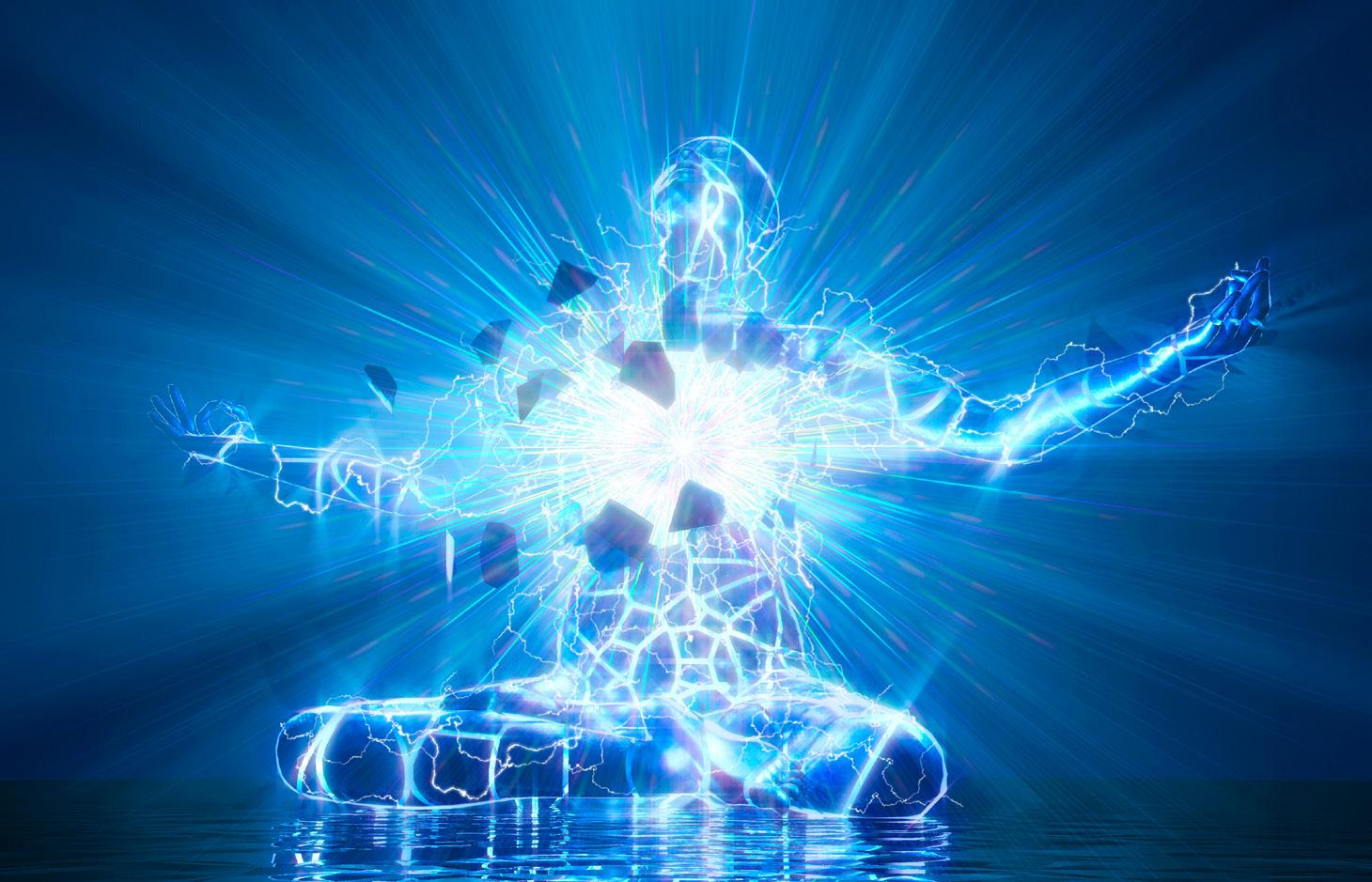
Follow the three steps below to plant your desires in your energy field.
Step 1—Get to Know the Energy of Your Desires
Since you already have a mental image or intention of what your specific desires are, the next step is to become involved in their creation by directing energy towards them and thus matching your vibration to their vibration. To understand how this works in a more visual way, think of your desires as orbs of energy. In the same way that your physical body, and all physical things around you, have an energetic presence, what’s known as the aura or energy field, so do your desires. When you become aware and familiar with the energy fields of your desires, you can invite them into your presence, connect with them, infuse them with your energy, and make them your own.
To do this, while in a meditative state invite the energy of your desires to enter your energy field. You can say something along the lines of, “I call upon the energy of my desires to come into my presence.” Once you set out your intention, you’ll feel your desires lighting up as orbs of energy around you. If they happen to show up further away from you, use your intention to draw them closer.
Start with one desire at a time, and spend some time observing and getting to know them energetically. Specifically, notice their colour, texture, density, the sound they
make, the taste they may have, the way they feel, and the kind of thoughts that come to mind when you perceive them. This process will allow you to understand your desires on an energetic level, so you can access and mould their energy more easily.
Having got to know the energy of your desires, the next step is to cord them in your energy field. This involves visualizing an energetic cord extending from the energy of each desire and connecting to your energetic body, usually to one or more of your chakras. To do this, simply set the intention to cord your desires to you, and visualize the cords extending and attaching to you.
Rather than attaching them to specific chakras, I always let my desires choose what chakra or other part of my body they want to make a connection with, and I simply observe and remember their choice.
Once you’ve attached your desires to you, focus on the energetic exchange that will naturally start to take place. Your energetic connection allows energy to flow both ways so that you can infuse your desires with specific thoughts, images, and energy, and your desires can infuse their own energetic communication to you through the cord. Bask in this position for a while and notice this energetic exchange take place.
To amplify this process, consciously invite the energy of your desires into your own energy. Feel the vibrational frequency of each desire flow through the energetic cord and into your energy field, tuning you to that frequency, too. Imagine these energies as vibrational vitamins that seep through every pore of your being and tune you to the frequency of your desires. While this energetic transmission takes place, you will likely feel your vibration changing; it’s important to keep your body relaxed and breathe deeply to allow this process to take place naturally.
As you tune your frequency to the frequency of your desires, you may also start getting downloads of action steps that you can take to bring your desires to life. Keep an eye out for these downloads and make a note of them after the meditation.
When this transmission feels complete, slowly bring some movement into your hands and shoulders and come out of the meditation. Be sure to have your journal nearby so you can take notes of your desires’ energetic location, the chakras they’re connected to, and any ideas and action steps that came up.
In her book Big Magic, Elizabeth Gilbert supports the notion that ideas, and consequently desires, are intelligent living entities with the singular purpose of manifesting themselves:
“I believe that our planet is inhabited not only by animals and plants and bacteria and viruses but also by ideas . . . Ideas are a disembodied, energetic life-form . . . Ideas spend eternity swirling around us, searching for available and willing human partners . . . When an idea thinks it has found somebody—say, you—
who might be able to bring it into the world, the idea will pay you a visit. It will try to get your attention . . . The idea will try to wave you down (perhaps for a few moments; perhaps for a few months; perhaps even for a few years), but when it finally realizes that you’re oblivious to its message, it will move on to someone else.”
Elizabeth’s theory aligns with the law of mentalism, which elucidates the relationship between the energetic and physical aspects of our desires. It also sheds light on the repercussions of failing to plant our desires in our energy field. Unless we actively engage with the energy of our desires by planting them and taking concrete steps to manifest them, they will eventually seek out new hosts.
There have been countless occasions in the past when I conceived ideas for new books and online courses, only to be hindered by other commitments. Eventually, I would discover that someone else had beaten me to the punch. Recognizing that desires are living entities, I consciously developed the habit of planting them in my energy field and nurturing my connection to them on a daily basis. Consequently, I keep these desires engaged until the time comes for me to dedicate the necessary time and energy.
However, it is important to acknowledge that I cannot keep them confined within my energy field indefinitely. If left unmanifested, they will inevitably find a way to escape, which fuels my drive to bring them to life. At present, my ideas for the two next book titles are firmly planted within my energy field. To ensure their continued engagement and prevent their departure, I activate their energy using the practices outlined in subsequent chapters while also engaging in daily research.
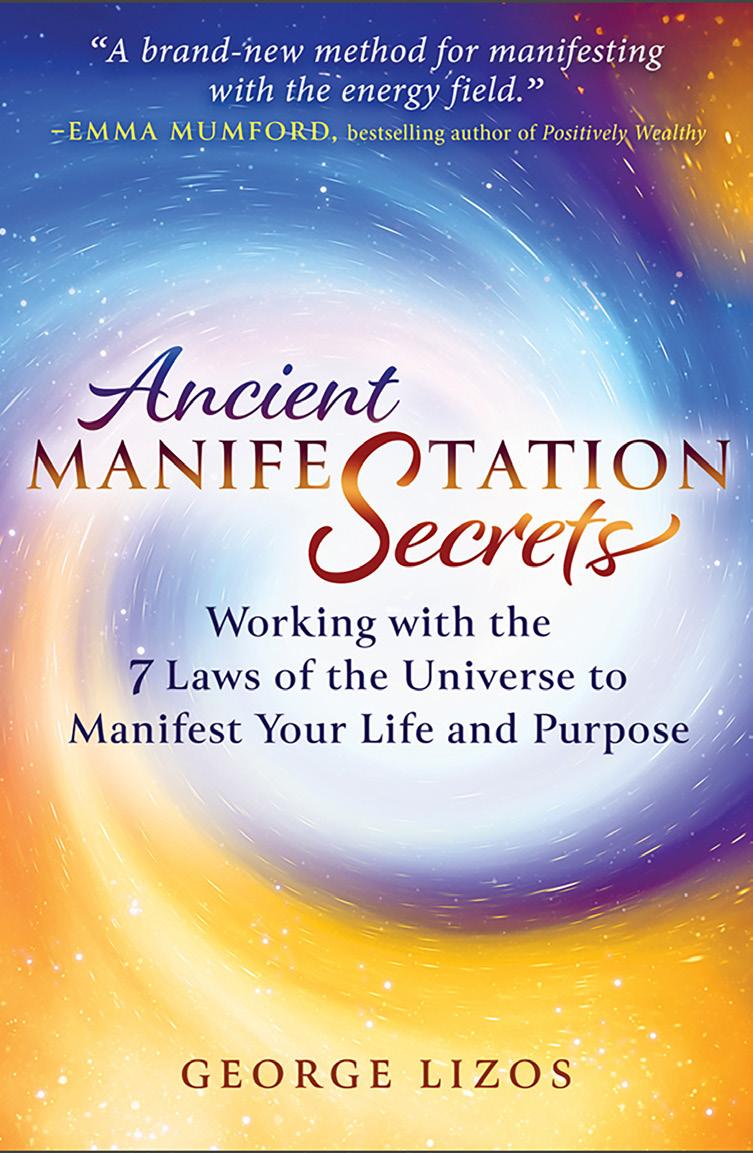

George Lizos is a spiritual teacher, psychic healer, Greek pagan priest, and the creator of Intuition Mastery School. The author of Be the Guru, Lightworkers Gotta Work, Ancient Manifestation Secrets, and Secrets of Greek Mysticism, he is the host of The Lit Up Lightworker and Can’t Host podcasts Named one of the top 50 health and wellness influencers by Health Blog Awards,he regularly teaches workshops and online courses. He lives in Cyprus. https://georgelizos.com



Welcome to Our Contributor Writers’ Neighborhood
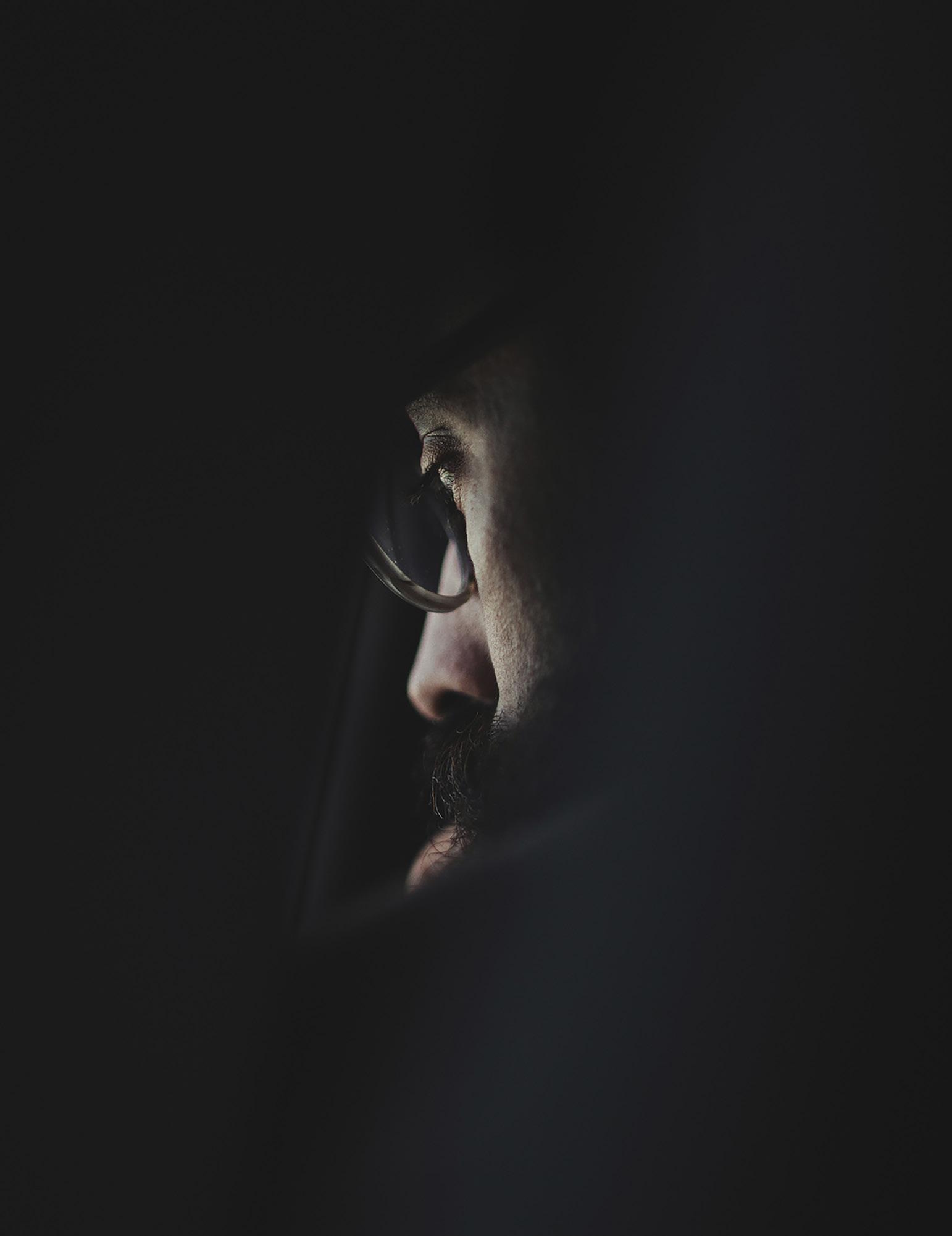
Life lessons are born in every situation. They forever exist in the various journeys of human endeavors. One can never know what will transpire within the human mind when a difficult life situation is steadfast in your face. The old master would say, "It depends," which is absolutely correct. Each and every one of us is a totality of experiences and opportunities we previously had. One's circumstances abruptly become the leading characters, now directing how we respond to living with cancer or any demanding situation, coupled with all the options this world has to offer.
Questions arise. Will these options have any value offerings? Do we now live to rediscover ourselves? Who am I now, and what do I have that I can offer my partner? Is the importance of my accumulated beliefs worthy enough to be inclusive in these years to come? The list is endless.
Nothing makes sense anymore. The DARK NIGHT OF THE SOUL is now upon me. Life appears as emptiness, and any purpose in going forward only offers chaos. One's dependency on past ideals, faith, and expectations is now completely debunked. Everything one assumes to give one's life purpose is no longer meaningful. These are moments (short and Long) that clarify and confuse one's newly imposed existence, which now ultimately directs any options one takes in moving forward. It is a time of contemplation, not depression, as others may determine. Always individual in nature, unlike meditation, one emerges out of
the fogs of confusion. Cementing a conscious passage to reinstate one's direction within our framework of new earthly idealism.
This, to shall pass and return again in one's future. Change is a natural state of human evolution. Acknowledging one's past is a guide to how one now moves forward. Concentration plays an enormous role in one's daily activities. Moving from the driver's side to the passenger side of the car, one asks, "Why did I come here"? Placing the meat in the fridge, only to discover 2 days later it's in the pantry. These small changes in one's abilities become an everyday occurrence, not to be brushed aside as the new normal. On each visit, the doctor asks you to say your name, DOB, this year, how many fingers he is holding up, and so on. It's the state of the art in how far we have come in determining changes in a patient's mind-memory.
James, a happy-go-lucky guy, experiences no side effects from his treatments. Yesterday, he arrived at the clinic hunched over; he's not looking good. He's had a bad reaction to the third trial drug session. After meeting with the doctor, in comes the wheelchair; he has pneumonia. The gentleman beside me explains that he only has 3 more treatments, and his wife is so happy their life may finally have some form of normalcy after 12 years of treatments. This human body of ours, along with its genius mind, has the capacity to endure whatever life tends to throw at it. Humans are majorly blessed beyond their understanding.
Music soothes the soul, so they say, as the red death, a nickname for the drug Doxorubicin, slowly drips via the cannula into my vein. It has become noticeably apparent how one is totally locked into this new state of mind way of healing. Life has moved closer inward. All is now inclusive and feels within me. The ritual morning and evening medication consumption is broken as the mind flies transfixed alongside a passing butterfly. Fortunately, everyday mundane has not made its presence known as the ocean waves throw me backward into its swirling mass. Coffee has been converted to ginger chai with friends.
The pace of life has slowed down immensely, as one acknowledges, I am not alone in this quest to remain.
We are all individuals, and everyone's response to having cancer treatments will be different, as to be expected. Patients mostly tell me it's easy and has little effect, yet when meeting, it's obvious that's not the case. We make it easy on ourselves by avoiding speaking with anyone about our ramifications who is not experiencing cancer. I may be sleeping in bed all day, not because I am sleepy, but because I am totally empty, completely exhausted due to the drugs and chemo. They are destroying the body. It's painful when turning a page of a book. Fingertips have turned numb.
I have to ask myself why I am allowing drugs that deplete me when medicine is supposed to be uplifting and make me feel better. The answer is obvious, as many before me have attested: the moment you are notified, there is virtually no other option. The options offered give very little choice, as cancers initially appear to be treated equally. There are more than 90 versions of Lymphoma. You have the choice to choose other options, only there is no or little research money provided for anything outside of that which does not include the use of drugs!
Is medicine humane?
America is a great nation; 66% use legal drugs and 24% use illegal drugs, and that is freedom legacy in a nutshell. There are two great movies out at the moment worth viewing. The first is Substance, played perfectly by Demi Moore. The other is A Different Man, played suburbly by Adam Pearson. Both are about two self-opposing characters; you could even say they are impersonating their opposing shadow half-selves. Both are about mind and behavioural addiction, combined with, do we have the ability and options to change or not change. Both are a perfect view of today's collective human psyche. What's behind your shadow?
In America today there are over 1.8 million nonprofit organisations, charities, and individuals who have donated money for cancer research over the past 50 years. Cancer organisations are given that money, then they distribute mostly to research centres who incorporate drugs. On December 23, 1971, President Richard M. Nixon signs the National Cancer Act, which authorises the NCI Director to coordinate all activities of the National Cancer Program, establish national cancer research centres, and establish national cancer control programs. Updated: August 31, 2020. This "1971 act" has defined how the health and well-being of every person in the USA is treated today.
Dare to look closer!
Now that you have followed me down this rabbit hole, what's next? I ask, where is the individual now that he/she has found themselves as a subject in a generic, homogenized, and pasteurized world of existence? It was created by the very same educated cultural system that colluded to make each and every one of us the exact same human. To choose right over any form of wrong is everyone's existence, which is an absolute impossibility. It is no wonder that chaos exists.

Who did you really learn from? Is one fully prepared when confronted with a life-threatening disease like cancer? Could your emotional reactions to death be yours, or do they belong, may have been learned from another? The reason is that one's reactions may unknowingly be a pattern one has learned and copied from one's parents. If this rings true, then are we capable of fully comprehending one's situation emotionally and remaining mindful going forward? If so, are we now passing our emotional patterns and reactions onto our children without our knowledge? Understandably, this may help one in observing how we view our current situation. This is no different from the claims that if a parent has a disease like cancer, it will most likely genetically be passed onto one's children. True or false, the idea continues to flow! Remember to acknowledge you are still alive.
Be not afraid.
Now is a time to discover. It's an opportunity to own you
The pace of life has slowed down immensely, as one acknowledges, I am not alone in this quest to remain.
identity, your individuality, to acknowledge your strengths, find your true nature. Never let your disease define who you are and never limit whatever is necessary, in your desire to survive. Additionally, continue to have the same intention in following one's path to personal freedom. There are no boundaries.
Death has arrived at our doorstep to bring us back home to what life and living are all about. It's an open door for each and every one of us. Our true healing lies in the fact that we are individuals, and from this moment forward, what we pursue in our future may not be how we lived our past. Take notice; this just may be the greatest opportunity ever received in your entire existence.
One more covert. For those of you who are not sick, especially those great supporters, these same opportunities also apply to you. Take notice. This opportunity is commonly called a blessing; we just didn't know it.

Transcendental Voyages:
Roaming the World and Reimagining the Self
By Jan Wakefield, M.A.
The Road to Hana is often described as a journey rather than a destination, but as I discovered over two unforgettable days, it's a mesmerizing drive that winds through some of Maui's most spectacular scenery, culminating in the tranquil haven of Hana itself. As I left Kahului behind, the landscape began to transform. My first stop was Ho'okipa Lookout, where the full majesty of Maui's North Shore unfolded before me. Towering waves crashed against the rocky shoreline while expert surfers danced across the water's surface. In the distance, Maui's verdant mountains rose from the sea, their peaks shrouded in mist. It was here, watching the raw power of the ocean, that I began to understand the deep connection Hawaiians have with their land and the sea.
Continuing on, I soon reached Twin Falls. The short hike through lush vegetation was a feast for the senses – the earthy scent of wet soil, the vibrant greens of native ferns and ti plants, and the constant melody of birdsong. The falls themselves were a vision of tropical paradise: two streams of water cascading over black lava rock into a crystal-clear pool below. I couldn't resist taking a quick dip; the cool water was a welcome respite from the humid air.
By midday, I had reached the famous Halfway to Hana Stand. This unassuming roadside stop is an institution known for its heavenly banana bread and refreshing coconut candy. As I savored these local treats, I chatted with the stand's owner, a native Hawaiian whose family has lived in the area for generations. He shared stories of old Hana, speaking of a time when the town was a royal capital, favored


by ali'i (chiefs) for its beauty and abundant resources. Indeed, Hana played a significant role in Hawaiian history. King Pi'ilani, who ruled Maui in the 16th century, was born and raised in Hana. Under his reign, Hana became a center of power, and Pi'ilani embarked on ambitious projects, including the construction of a road circling the island – the ancient predecessor of the very road I was traveling.
My next stop was the Hana Lava Tube, a testament to Maui's volcanic origins. Descending into the cool darkness of the cave, I marveled at the rough walls and intricate formations created by ancient lava flows. It was simultaneously creepy and cool. The tube stretched on for what seemed like a mile, a subterranean world that felt both alien and primordial. Emerging on the far end, I opted to walk the road back to my car instead of repeating my steps through the blackness.
As afternoon faded into evening, I finally reached Hana Town. This small community of just over 1,000 people feels like a step back in time. Despite its royal history and the steady stream of visitors, Hana has managed to retain its rural charm and laid-back lifestyle. I wandered through Hasegawa General Store, a 100-year-old establishment that seems to stock everything from traditional lei to modern camping gear. I bought a bumper sticker that said, "Fight Smog, By Horses" for a friend back home.


Exhausted but exhilarated from the day's adventures, I checked into my luxury hotel perched on the cliffs overlooking the Pacific. The spacious grounds were a tropical paradise, with winding paths leading through gardens bursting with orchids, birds of paradise, and fragrant plumeria. As the sun set, painting the sky in brilliant oranges and pinks, I found myself on a secluded stretch of cliff, the vast ocean stretching to the horizon. The worries of the outside world seemed to dissolve in the salty sea breeze. Dinner at the hotel's restaurant was a celebration of local flavors. I savored every bite of fresh-caught mahi-mahi, accompanied by taro and sweet potatoes grown on nearby farms. The meal ended with a slice of lilikoi (passion fruit) cheesecake that was nothing short of divine.
I rose early the next morning, eager to make the most of my time in Hana. After a rejuvenating yoga session in a studio overlooking the ocean and a refreshing swim in the infinity pool that seemed to merge with the sea beyond, I reluctantly bid farewell to the hotel and hit the road once more. My first stop was Hamoa Beach, often cited as one of Maui's most beautiful stretches of sand. The crescent-shaped cove, framed by lush hillsides, lived up to its reputation. I spent a blissful hour snorkeling in the clear waters, marveling at the vibrant fish and colorful coral formations beneath the surface.

Just a short drive away, I paused at Koki Beach for photos. The contrast here was striking: rust-red sand met turquoise waters, while in the distance, the small island of Alau provided a picturesque focal point. Legend has it that this island is the final resting place of Hana's last queen, Ka'ahumanu, adding a layer of historical poignancy to the beautiful scene. As I began the journey back towards Kahului, I stopped at Hanawai Falls. Unlike some of Maui's more famous waterfalls, this hidden gem offered a moment of serenity away from the crowds. The three-tiered falls tumbled gently down a fern-covered cliff, creating a series of inviting pools perfect for a refreshing dip.
My final stop before leaving the Hana area was Ke'anae Arboretum. This living museum of Hawaiian flora was a fitting end to my journey, showcasing the incredible biodiversity of the islands. I strolled through groves of bamboo towering overhead, admired the vibrant red and pink blooms of native 'ohi'a lehua trees, and learned about the many uses of the versatile pandanus plant in traditional Hawaiian culture.
As I made my way back to Kahului, retracing the winding path I had taken two days earlier, I re-
flected on the rich history and culture I had encountered. The Road to Hana is more than just a scenic drive; it's a journey through the heart of old Hawaii. From the time of the early Polynesian settlers to the days of the Hawaiian monarchy and beyond, this region has been cherished for its beauty and abundance. King Kamehameha I, who unified the Hawaiian Islands in the early 19th century, recognized the strategic importance of Hana and spent time there consolidating his rule. Later, during the reign of King Kamehameha III, Hana played a crucial role in the Great Mahele, a redistribution of land that dramatically altered Hawaiian society.
Today, Hana remains a stronghold of Hawaiian culture, where ancient traditions are still practiced, and the Hawaiian language is spoken daily. It stands as a reminder of what Hawaii once was and what it can still be: a place of breathtaking natural beauty, rich cultural heritage, and warm aloha spirit. The Road to Hana is a journey that connects you not just to a place but to a way of life – one that values connection with nature, respect for history, and the simple pleasures of island living. In Hana, I found a deeper understanding of the true spirit of Hawaii.
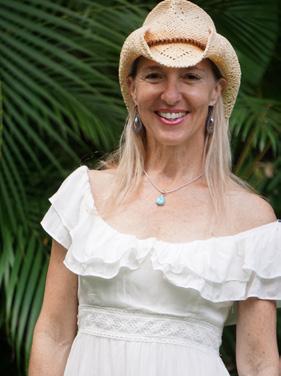
A lifelong traveler and educator, Jan Wakefield sees the world as a vast opportunity for expanding her understanding of the human condition. For her, travel equals transformation. Jan’s passion for travel and decades of experience as a personal transformation coach are the foundation for her international retreats, where people release who they once were and embrace who they want to be through meditation, relaxation, and a gentle return to self. In addition, Jan plans to visit all 195 countries in the world and share her experiences with readers and audiences worldwide. For more about Jan’s transformational retreats and programs, visit http://jan-wakefield.com
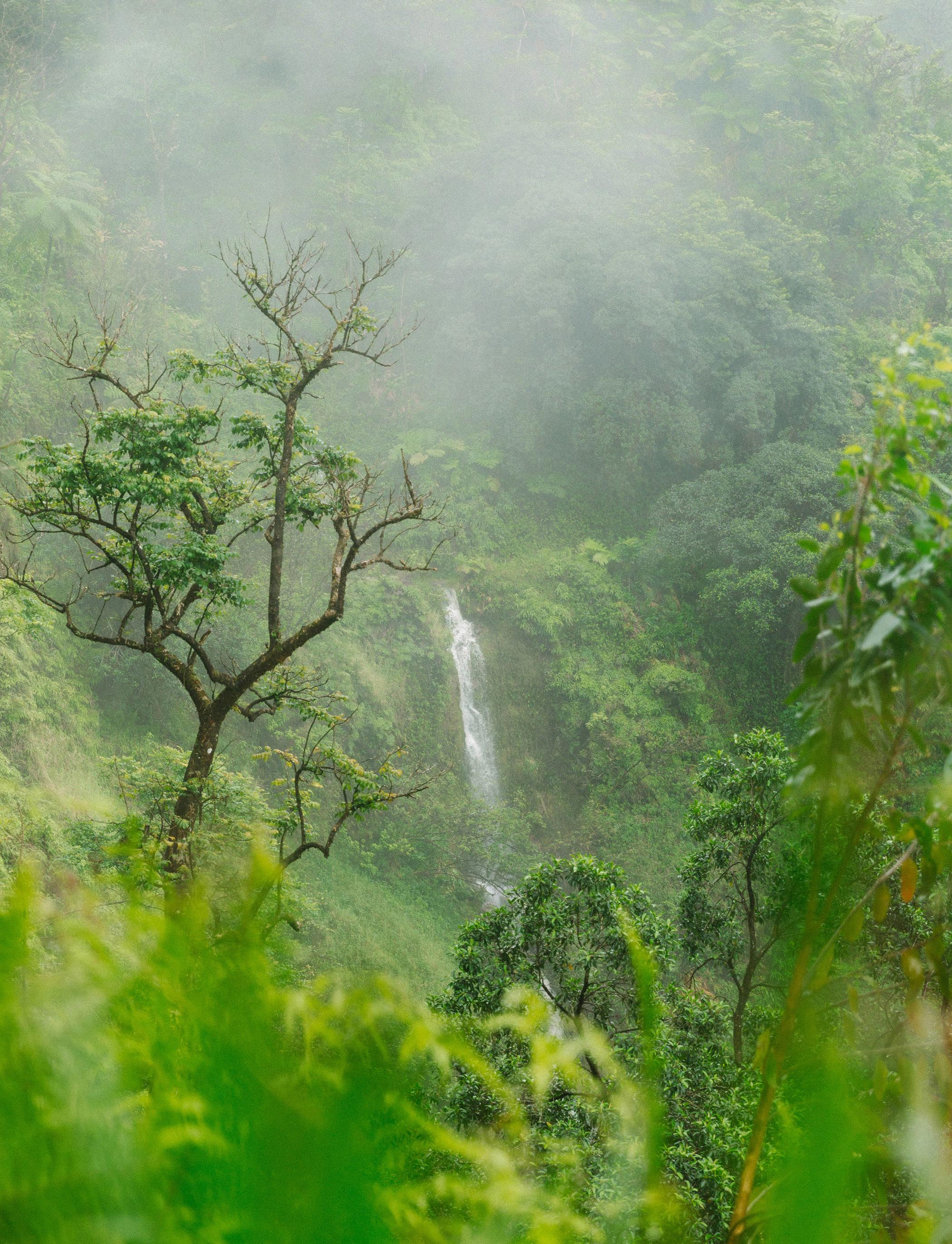
By Polly Wirum

Our world is always shifting and moving, creating new opportunities; therefore, it doesn't offer a completely predictable sequence of events to plan our lives around. Most of us are prepared for the shifts that come when the seasons change, yet we can only partially prepare for the events that occur outside of the anticipated events. These unexpected twists and turns bring the perfect opportunity for growth and healing into our lives. This blog is written to help you embrace the unknown, so an expansive and higher vibrational way of being is accessible to you.
First, let's explore the words expansive and high vibration. I frequently use them in my writing because they are the simplest way to describe what is being offered to us in our rapidly changing universal experience.
Expansive: An expansive way of being allows you to move through life without getting caught up in chaos, drama, and other distractions. You clearly understand how to work with the universal energies to manifest a life that inspires and is lovely to experience.
High Vibrational: Many people believe that the higher your vibration, the more you experience love versus fear in your daily life. This means your choices come from a loving and peaceful state of mind instead of a stressed and fearful thought process.
The Unknown
Even when we purposely create change in our lives, there is an element of uncertainty about how it will strictly come to be and what the final outcome will look like. The closer the experience is to what we envisioned, the less stress there is in our personal world.
Times when it feels more difficult to predict the outcome there is often stress and uncertainty intertwined with potential growth.The main challenge in this situation is letting go of our predicted outcomes and making peace with the new landscape of ourlife.
Imagine rolling out pizza dough with a rolling pin on a hard surface. If the rhythm used to create a larger, more expansive sphere is gentle and predictable, you will have a nice, easy piece of dough with a round shape to build your desired flavors on.
What if the expansion comes in jarring and explosive movements?
Chances are the dough will look uneven, riddled with holes, and possibly stretched so thin that it falls apart. This creates a surface that is less stable and more difficult to use as a foundation for your dreams.
This scenario is not much different from when our lives undergo an expansive period of growth. We might feel stressed, stretched way too thin, unsteady, and unsure of our next step. When our life foundation changes, it offers the perfect opportunity to slow down and determine where and how we want to build our dreams.
Standing in the unknown often brings new life perspectives and even gratitude for what once felt overwhelming. This new and unusual shape you find yourself building may be helping you discover an empowered way of being.
The unraveling of my marriage brought many changes into my life, some completely predictable, others were filled with the unknown. I have fully embraced trying new things and returning to experiences I once loved.This has been fun and challenging at the same time! The platform of my life expanded very quickly and is filled with holes, and sometimes feels very challenging to build on.
At times, I need to slow down and create a space that allows reflection on the shape of my life.
In the worst moments, I question some of the choices I have said "yes "to. In the best moments, I am grateful for the new possibilities that help me feel inspired and empowered.
Most of these choices involve physical challenges like rock climbing, pack rafting, and canyoneering, often in places with no cell service. The physical aspect has proven to be much easier than the mental and emotional aspect of learning new skills. I have found myself experiencing uncertainty, vulnerability, and humility. It has been impossible not to be completely focused on what is unfolding right now in my life.
Maybe the gift of embracing the unknown is allowing myself to be more present in the moment and recognizing the choices right in front of me.
During this rapid expansion, I have had experiences that made it difficult for me to stay calm and trusting. I have yelled, cried, and fallen apart in intense frustration.
Blending The New with The Familiar
In the past couple of months, I have sold a house and bought and flipped a house, leaving me a little homeless. Some of my belongings are in storage; some are at a friend's house.
Selling my home and buying a different property was planned. The discomfort of not knowing when I would find my next home, or where I would sleepis part of the unknown and this scenario offered unplanned expansion in my life.
My coping mechanism involves getting outside and having some type of physical challenge. This is exactly why I said "yes" to a multiday pack raft river adventure. I literally had no clue what the next four days offered except camping, rowing my own boat, and relying on others for guidance.
In the back of my mind, I was
thinking of a day rafting trip I took with my ex-husband. It ended with our shared boat crashing into a boulder, I fell into the rapids with my anger. I wasn't hurt, it was just my frustration of not having any input on our path. Everything felt out of my reach, my emotions and the water churned all around me.
On my recent trip,I didn't have a river skillset or finesse, but I recognized that any rocks I hit happened because of the decisions I made. There was no one else to blame.
This brought me a strange comfort.
On the San Juan River trip, I was equal parts humbled, inspired, tired, and very much alive. This trip helped reshape my life by offering me another opportunity to fall in love with river adventures. I will always be grateful to the people who helped make this happen.
We all live in the unknown and, therefore, experience the magic that is cultivated in this expansive place of opportunities. Each of us is invited to stand in the power of self-awareness and make choices that align with our most significant potential.
The unknown is not to be feared or controlled but celebrated for all the ways your world can expand in new ways of high vibrations and love.
Wherever you are on your journey, celebrate the choices you have made and your ability to choose again. Most of all, remember that amazing possibilities are waiting for you in the unknown.

Polly Wirum is a psychic, life coach, and writer. Years ago, she experienced a health crisis that led to a complete spiritual and life transformation. When she thought her life was crumbling, the universe was easing her grip on everything, distracting her from the truth. The healing helped her discover the beauty of a joyful and uncomplicated life. It is here that she connects with wisdom and magic. She shares this with her clients through life’s coaching psychic readings and spiritual retreats. visit Pollywirum.com
By Dulce García-Morman, Ph.D.
When we encounter a myth, perhaps our initial inclination may be to see it as an illusion or fantasy, which it is on some fundamental level. However, myths also play an important role in society and in the individual. The late scholar of religion and mythology, Joseph Campbell, identified four primary functions of mythology, and I’d like to highlight two of those functions here. On the one hand, there is the cosmological function, which “presents an image of the universe that links local knowledge and individual experience to that mystery dimension.” On the other hand, we have the psychological function that “serves to guide each individual through the stages of
life, within the context of that culture” https://www. jcf.org/learn/joseph-campbell-four-functions-of-myth.
Myths are fantastical stories, but that doesn’t make them less relatable to our lives. On the psychological level, we also have the work of Carl Jung, who viewed mythology, fairytales, and dreams as the language of the psyche/soul, or the language in which the unconscious communicates with our conscious self. In fact, a key tool of Jungian psychoanalysis and coaching is to help the individual identify repressed material that has been hidden in the unconscious (shadow aspects of the self) and to make it conscious. It is through this illumination that the shadow aspects of the self can be embraced, processed, and integrated into the imperfect whole that we are.

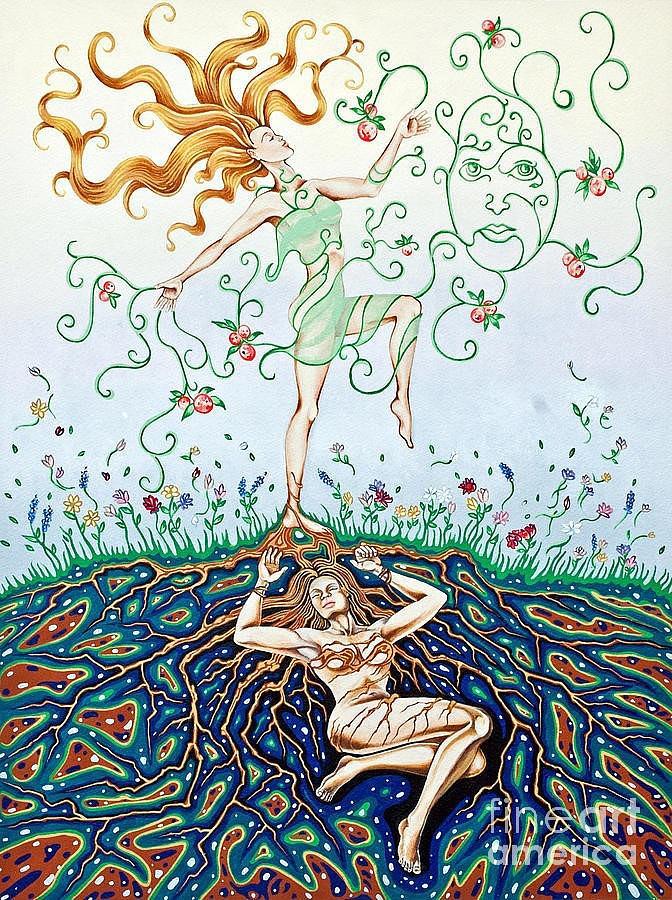
For this month’s article, I picked the myth of Demeter and Persephone because it symbolizes the transition into winter, the cold season in many areas where plants and many animals go dormant -it is a time of rest from the busy seasons of planting in spring and summer and ending with the fall harvest. On the physical and psychological plains, it is a time of retreat. This is, of course, felt more or less depending on the climate where we live. In tropical and subtropical areas, many crops can still be harvested in winter. But let’s assume, for the purposes of exploring this myth, that winter is in full swing -if you live in South Florida, imagine what it’d be like to move northward!
“In ancient Greek mythology, the story of Demeter and Persephone tells of the deep connection a mother shares with her daughter. It also tells the story of a young girl who comes of age and falls in love with the dark god of the underworld.
It represents the fading of innocence as a young woman charts her way into maturity to forge her destiny, to the dismay of her fiercely protective mother. You can draw inspiration from this story and use it as a guide to how you deal with the different seasons in your life” https://www. theoi.com/articles/what-is-the-demeter-and-persephonestory-summarized/.
The legend says that Hades, the lord of the underworld, fell in love with Persephone, the beautiful daughter of Zeus and Demeter. “Demeter was the life-giving goddess of agriculture, grain, and harvest. She provided mortals with plants, food, and vegetables. She also gave them the ability to cultivate wheat. She showed them how to plant the seeds, nurture them, and harvest them. She even taught
them how to grind the grain to produce flour, which they could turn into bread”. https://www.theoi.com/articles/ what-is-the-demeter-and-persephone-story-summarized/. Demeter also had a very close bond with her daughter, who was always guarded by nymphs of the sea when Demeter had to step away to do her work on the earth.
Hades asked Zeus for permission to marry Persephone, but Zeus knows that Demeter will never agree to give her beloved daughter over to the dark god, who will forever be trapped in the underworld. Zeus and Hades then begin conniving to ensure that Hades can get his girl. I cannot go into the full details of the deceitful abduction of Persephone, but I encourage the reader to look it up -it is a fascinating legend! If you do so, you will see how the narcissus flower played a role, which will also give you some insight into the modern concept of narcissism, so common on our narrative today. You will also know how nymphs came to be sirens, and you will uncover the fascinating symbolism of pomegranates in Greek mythology.
When Demeter learned of her daughter’s abduction, she went mad with grief and anger. She searched for her day and night, neglecting her duties to feed the mortals.
“Plants withered, animals died, and famine ravaged the earth, resulting in untold misery. The cries of the mortals reached Mount Olympus, and Zeus knew that he had to intervene to calm Demeter’s wrath and spare humanity” (https://www.theoi.com/articles/what-is-the-demeterand-persephone-story-summarized/).
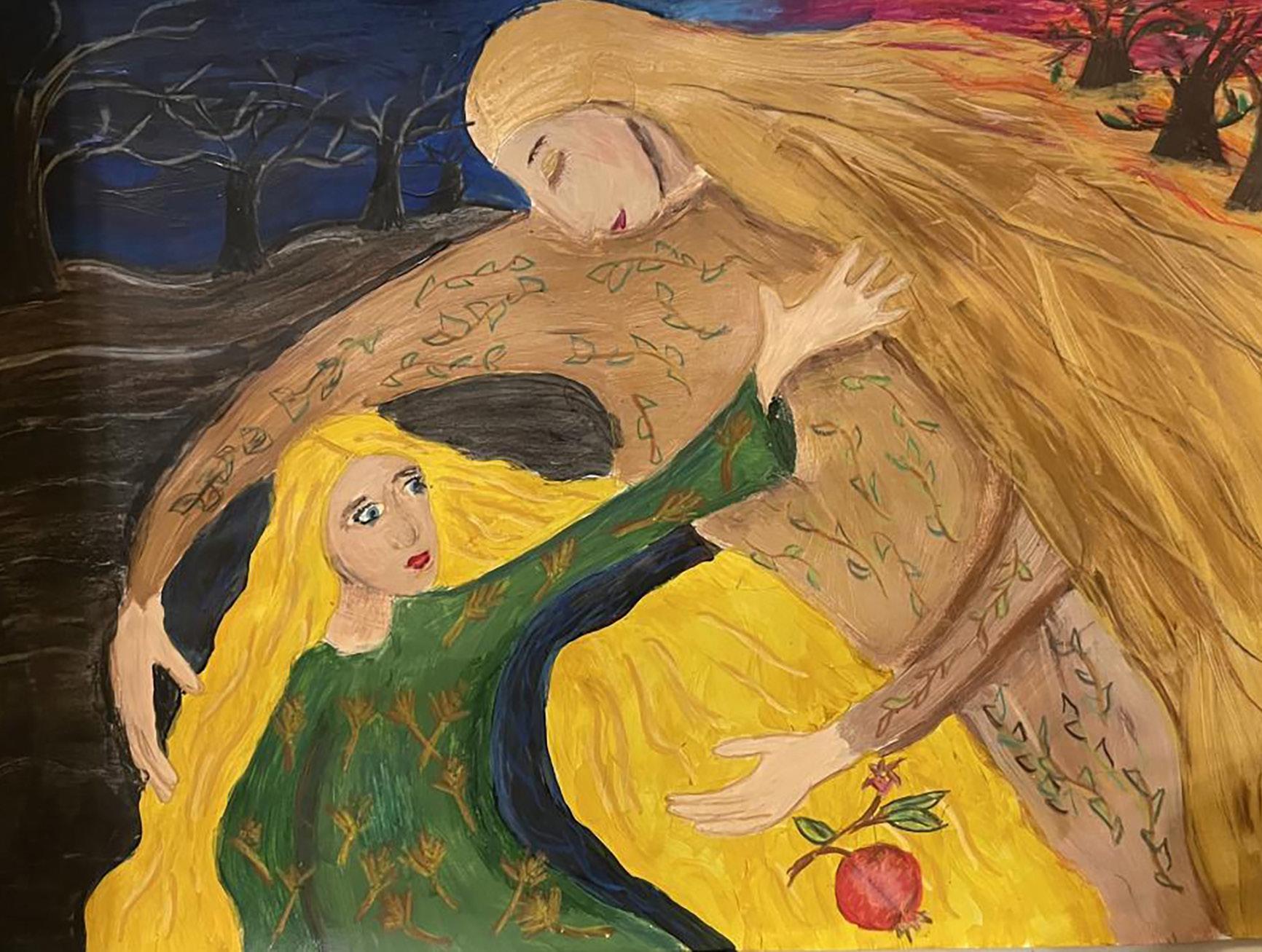
To save the world from destruction, Zeus sent Hermes into the underworld to bring Persephone back. To their surprise, she was happy with Hades, who had built beautiful gardens for her and adored her. It is assumed that she saw a side of the lord of darkness that was loving and compassionate. Persephone was torn between her love for her mother and her love for Hades, so a deal was struck because Demeter made it clear that she would never again tend to the earth. Persephone would return to the earth and her mother for half the year and back to Hades in the underworld for the other half. This legend gave rise to the seasons of autumn-winter (death) and spring-summer (renewal), which did not exist before.
Going back to the functions of mythology, the myth is loaded with meaning for our lives. On the one hand, it presents a cosmology that is relevant to our ordinary life. It provides fantastical logic and a creation story to explain the seasons. For me, at least, Persephone and Demeter feel very present during the spring equinox and winter solstice -I always remember them and entertain the silly idea, if only for a moment, that a story of love produced the seasons. It brings a smile to my face, and I remember my own bonds of love with my mother and grandmother.
On a psychological level, the story of Persephone and Demeter is the story of countless people, from a mother’s suffering through the real loss of a child to the suffering of dreams we sacrifice (our creative children) to tend to the mundane task of putting food on the table. From a Jungian perspective, this is a perfect example of the barrenness and maddening grief we can all get from a devastating loss or other traumatic experiences. When I went through this “dark night of the soul”, I could only describe it as feeling orphaned and
exiled into a barren, unfamiliar, and hostile land -the dark underworld of Hades. Metaphorically, these are the autumns and winters of our lives.
According to Carl Jung, the Dark Night of the Soul (in capital letters because it is the “big whammy,” not at all like the smaller dark nights we experience throughout our lives) is the biggest catalyst for psychological and spiritual transformation. Taking a trip into the underworld is a necessary condition for becoming whole. It is like being swallowed whole by the dragon of fire and spit out in a state of joy and gratitude. The time in between can be daunting for the individual to navigate. In Jung’s view, borne of his own personal journey, the Dark Night of Soul, or the descent into the underworld of Hades, is necessary to reunite with the Mother, the Soul, the source of unconditional love. And strangely enough, from my own experience and that of others I know, once we greet Hades and embrace him, we begin to see him as an ally, to learn from him, to fear not his darkness, but to see its beauty and function. We understand, finally, that the integration of the dark into the light is what makes us whole, it is where the yin finds its yang. And the lifelong job becomes about maintaining an equilibrium. It is a humbling experience to finally leave our arrogance aside and decide that the underworld has something invaluable to teach us. Perhaps most of us can relate to Persephone and Demeter in our own journey toward maturity and a more individuated self. Demeter is also a symbol of the creative and destructive power of the Feminine -her love for her daughter knew no bounds, and it brought the mighty gods to the negotiation table. Love struck a deal where everyone won, even if for half the year. Thus, I go into winter with deep gratitude for Demeter’s sacrifice, and it matters little if it is true or not.

García-Morman, Ph.D. is founder of Life-Is-Art Equine Assisted Learning & Coaching. She has facilitated learning and therapeutic experiences through the horse-human connection for the past 17 years. Dulce’s practice draws from different wisdom traditions and is strongly oriented toward a Jungian approach to the restoration of the authentic Self.For more information, visit https://life-is-art.us/


by Grace O
Research has shown that cuisine from Blue Zone regions contributes to enhanced well-being and longevity.
As we age, the prevalence of chronic diseases is on the rise. While genetics play a role in determining lifespan and disease susceptibility, lifestyle choices exert a more significant influence.
Certain regions around the globe, referred to as Blue Zones, have garnered attention for their remarkable attributes. Coined by author Dan Buettner during his exploration of areas known for longevity and low rates of chronic illness, the term denotes specific geographic locales where residents enjoy extended lifespans and
exceptional health.
Grace O, the visionary behind FoodTrients, derives her philosophy of graceful, healthy aging from the dietary practices observed in the vibrant Blue Zone regions.
One Blue Zone Grace has focused on is Loma Linda, a city within San Bernardino County, California, with just over 24,000 residents. It is one of five regions in the world where the population has notably exceptional longevity. Loma Linda is a unique Blue Zone for many reasons; it is the only Blue Zone located in the U.S. and is also far less geographically isolated than the rest.
Loma Linda has one of the largest concentrations of Seventh-day Adventists in the world. Members of this religion see health as a central part of their faith. Much of the longevity of this population has been attributed to plant-based dietary habits, regular exercise, and abstinence from caffeine, smoking, and alcohol. This tight-knit community in California historically outlives the average American by ten years.
Seventh-day Adventists consume a predominantly plant-based diet and believe this diet is the original diet intended for humans. Some consume a vegan diet, while others consume a vegetarian, lacto-vegetarian, or a more flexitarian version of a plantbased diet. Adventists recommend consuming meat in small, side-dish portions for those who choose to consume it. In general, they consume a well-balanced diet focusing on fruits, vegetables, whole grains, legumes, and nuts and limit salt, sugar, herbs, and refined grains.
Embracing a blue zone lifestyle often involves harnessing the power of herbs and spices to elevate culinary experiences. For the California Blue Zone, Grace has selected a few drought-tolerant herbs that thrive in Southern California's climate and can
be grown in any home garden. These herbs enrich dishes with their robust flavors.
• Sage: can be used to flavor oils, marinades, and pasta. It has been used in folk remedies to treat conditions like heartburn and digestive issues.
• Rosemary: can be used in the kitchen in a variety of ways – to flavor breads, soups, oils, and cookies.
• Oregano: a versatile and easy-togrow plant, it pairs well with basil and can be used fresh or dried to flavor pasta dishes, soups, and sauces.
You don't need to live in Loma Linda to implement longevity habits from this unique community. Consider dedicating a day, or even a couple hours one day a week, to rest. Focus on more plant-based foods in your diet and consider a vegan, vegetarian, or simply more flexitarian plan for yourself.
Try this delicious dessert recipe from Grace O's Anti-Aging Dishes from Around the World cookbook utilizing elements of a Blue Zone diet and perfect for spring:

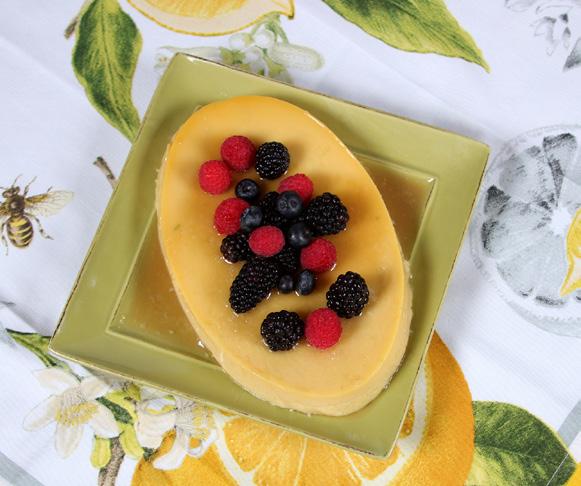
Blue Zone Ripple Flan with Berries Serves 4-6
Ripple is a non-dairy, nut-free milk made from pea protein. It's popular here in California and in the Blue Zone of Loma Linda. It's available in some markets and on Amazon. With a little creativity, it can be used to make a non-dairy flan. I've used dark agave syrup in place of caramel for a more natural and less processed ingredient.
Benefits Ripple non-dairy milk has half the sugar of cow's milk but more calcium because it is fortified. It also contains protein for muscle and bone health and omega-3 fatty acids for heart health.
FoodTrients: Disease Prevention, Strength
Ingredients
⅓ cup dark agave syrup*
2 whole eggs
6 egg yolks
2 cups Ripple Unsweetened Original non-dairy milk
½ cup coconut sugar (or monk fruit sweetener)
2 tsp. lime zest
Procedure
1. Preheat oven to 350 degrees F.
2. In a pot, add the agave syrup and simmer over low heat until reduced to half. Pour into 2 metal flan molds or a 4 by 6-inch oven-proof glass baking dish. Set aside.
3. In a medium bowl, mix the whole eggs and the 6 egg yolks with the milk and sugar.
4. Using a fine strainer, strain the egg mixture into the molds or baking dish and sprinkle with the lime zest. Place the molds or baking dish into a deep pan.
5. Fill the pan with enough water to come halfway up the side of the mold or baking dish.
6. Bake for 40 minutes or until set.
7. Run a knife around the inside of the molds or baking dish to free the flan and turn it out onto a serving dish. Serve warm or cold, and top with fresh berries, if desired.
Gluten-Free
*Sugar-Free if using monk fruit sweetener as the agave syrup will raise your blood sugar level
About FoodTrients
FoodTrients® is a philosophy and a resource dedicated to the foods and rejuvenating nutrients that help us fight the diseases of aging and promote longevity. All of the recipes combine modern scientific research and medicinal herbs and ingredients from cultures around the world. They’re loaded with flavor and superfoods, which promote wellness, increase energy and vitality, improve skin, and help people look and feel younger. For more information and recipes, visit www.FoodTrients.com.
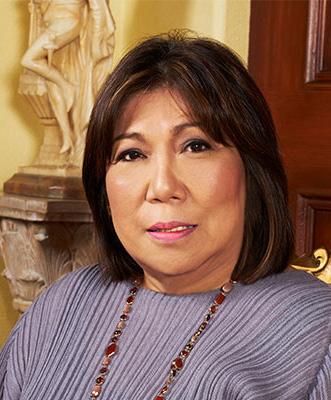
Resources
Green, C. M. (2021, May 1). Longevity Blue Zone Centenarians: An expository paper. Inquiries Journal.
Loma Linda, California – Blue Zones. Blue Zones – Live Better, Longer. (2021, May 4).
Spector, N. (2019, April 3). What 'blue zone' city, Loma Linda, California, can teach us about living longer? NBCNews.com.
Whittaker, L. (n.d.). 7 drought-tolerant herbs: Southern California tips: Install-it-direct. INSTALLITDIRECT.
Over a span of 30 years, Grace O has built an impressive record of business achievement, community building, philanthropy, and community service in California. Guided by her spirit of entrepreneurship and building on a model of generosity learned from her family, Grace has spent a lifetime helping people heal through food and medicine. Grace launched FoodTrients.com in 2010 where she shares age-defying superfoods from around the world and creates delicious recipes with them. Grace is the author of three award-winning cookbooks—The Age GRACEfully Cookbook: The Power of FOODTRIENTS to Promote Health and Well-being for a Joyful and Sustainable Life; The Age Beautifully Cookbook: Easy and Exotic Longevity Secrets from Around the World, and the multi-awardwinning Anti-Aging Dishes from Around the World.

“Animals Have Souls Don’t Put Them in Your Bowl”

On November 4th, the Ryan Gordy Foundation held its second annual BMW and Ryan Gordy Golf Classic at The Oak Club in Valencia, California. The event brought together golf enthusiasts, philanthropists, and community members to support young adults battling cancer.
The day was filled with camaraderie, inspiring stories, and the shared mission of making a tangible impact in the lives of those facing life-altering diagnoses. Participants enjoyed a round of golf on the scenic course, followed by a fundraising luncheon and an awards ceremony.


The foundation, named after Ryan Gordy, is dedicated to providing resources, emotional support, and financial aid to young adults navigating their cancer journeys. Proceeds from the event will fund treatment assistance, wellness programs, and scholarships, ensuring that recipients can focus on healing and rebuilding their lives.
The Oak Club at Valencia provided the perfect backdrop for this heartfelt cause, with BMW serving as a proud sponsor. Their partnership highlighted a shared commitment to community and compassion, as participants competed in good spirits while re-
membering the deeper purpose behind the event.
With a strong turnout and generous contributions, this year’s golf classic exceeded expectations, demonstrating the power of collective action and compassion. The Athena Ryan Gordy Foundation continues to lead the way in offering hope and support to young adults battling cancer, turning challenges into opportunities for strength and resilience.
For more information about the foundation and its mission, visit; https://www.ryangordyfoundation. org/



Patrika Darbo is a powerhouse actress and former TV Academy Governor whose career has left an indelible mark on television, film, and theater. With over three decades in the industry, Patrika has charmed audiences with her unforgettable roles, from her performance on Days of Our Lives to her standout appearances on The Bold and the Beautiful and Beyond, and a winner of Primetime Emmy for Outstanding Performer for the short format series Acting Dead. As a former governor of the Television Academy, she has not only brought depth and humor to countless characters but has also played a pivotal role in shaping the future of television. In this exclusive interview, Patrika opens up about her journey, her dedication to her craft, and her passion for storytelling.


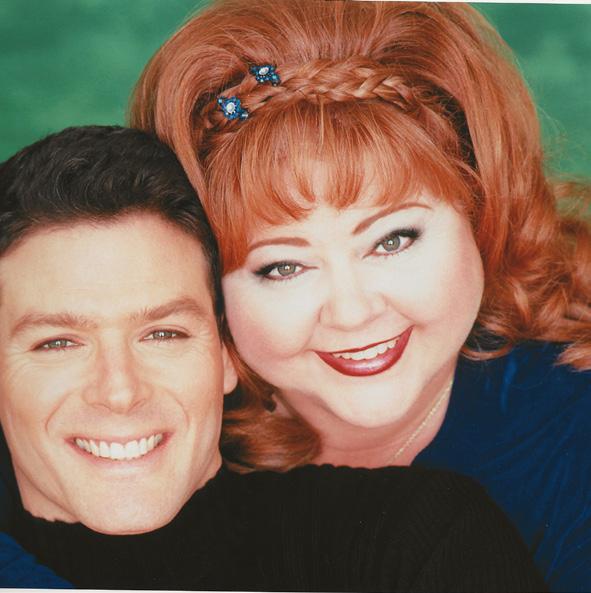
You've had a long and successful career in both film and television. What do you think has been the key to your longevity in such a competitive industry?
I have had a long career because I am always kind to everyone. Today's secretary in the casting office is tomorrow's casting director, producer, or director. You never know who you might meet today and later in the future. It does not take a lot of energy to be positive and kind. I believe in treating people how I want to be treated. Having an acting career also takes hard work and preparation. I always study, know my lines, and take my craft seriously.
You've portrayed a wide variety of characters over the years. Is there a particular role that has impacted you personally or that you're incredibly proud of?
I played the role of Marlene Turnover in Daddy's Dyin' Who's Got the Will? I portrayed this character on stage for two years and then at the Fringe Festival in Scotland. I was then fortunate enough to reprise the role on the big screen. Marlene was a heavy-set wife, and her husband, played by the wonderful Beau Bridges, was not pleasant to her. Marlene finally came into her own and realized that her husband was a male chauvinist pig. In the end, another man sees Marlene's worth and loves her for what she has on the inside. She eventually runs off with him and finds happiness.
You're a passionate advocate for several charitable causes. Can you tell us more about the causes that are closest to your heart and what inspires your involvement in them?
My number one thing is that anyone who hurts an animal or a child is on my bad list, and I will do anything to protect them because they are innocent and they don't have a voice. My third most valuable is our veterans. They are the reason we have freedom. They selflessly leave their families and homeland to protect us, and we must protect them. We need to help our veterans with mental health and all their health issues. I currently work with The Thalians, an organization focused on mental health issues that Jane Mansfield and Debbie Reynolds started. We raise money and donate to Operation Mend at UCLA, which provides mental health services to our returning soldiers and those who may develop PTSD. I am very proud of The Thalians and our work.

You've been an advocate for promoting body positivity and breaking stereotypes in Hollywood. How have you seen the industry evolve in terms of diversity and inclusion throughout your career?
I've seen our industry finally realize that we all come in different shapes and sizes. We also come in different colors and ethnicities. Starting out as a full-figured actress in my 20's, I was doing character roles. Back then, any woman with a weight problem was the abused housewife, the ditsy neighbor, or a school cafeteria lady. The heavy-set characters were always the punch line, which applied to more women than men. I didn't, and I still will not play characters where they are the joke because it is at the expense of an overweight person. Unless the writers and creators make them the winner, in the end, showing that bullying and name-calling are not acceptable. However, today, we have wonderful talents like Lizzo, Melissa McCarthy, Nicola Coughlan, and Octavia Spencer, and our talent is not based on our avoirdupois!
What advice would you give to aspiring actors and actresses trying to break into the industry today, especially those who may feel that they don't fit the traditional mold of Hollywood standards?
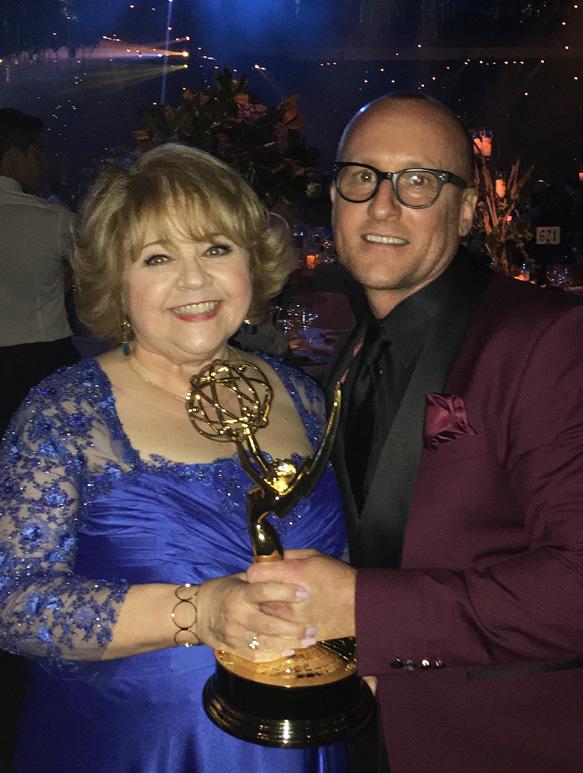
Get all the education you can. Do theater and get yourself in classes with fellow working actors and other upcoming actors. Hone your craft. Don't just say, "I am a dramatic actor." Don't limit yourself. If you are an actor, do everything! Make sure you sing and dance, too. Be a well-rounded performer and, above all… Don't let anyone tell you that you can't have your dream!
@darbopatrika

Top (good luck) superstitions from around the world
by EdelWyn
» A worldwide superstition involves picking up coins when finding them—as a "thank you" to the universe and a message to send more.
»Number eight is a lucky charm in China - so fortunate that the Olympic Games in Beijing started on 8/8/2008 at 8:80 PM.
»Two of the seven good luck superstitions concern things to do on New Year's Eve or Day to ensure a great coming year.
Good luck superstitions, which range from small gestures to elaborate actions, are varied and exist in many cultures. People worldwide not only keep their fingers crossed but also try to 'help' fate and not wait for stuff to just happen.
Master psychic medium experts from EdelWyn share some interesting superstitions from around the world that might attract that sought-after good luck.
Lucky number eight (China)
In China, the number eight is synonymous with fortune and prosperity, so anything related to it is believed to indicate good luck. People choose their wedding dates to involve this number, and everything from phone numbers to flight numbers is considered luckier if they have eights in them.
Eight is considered so lucky that the 2008 Summer Olympic Games in Beijing started on 8/8/2008 at 8:80 PM, using the digit as a lucky charm. So, the timing of the date was by no means accidental.
Eating beans on New Year's Eve (Argentina)
Argentinians prepare for a prosperous New Year by eating beans for good luck. They believe the beans will bring them security and luck in their jobs, whether they eat them on New Year's Eve or New Year's Day. It's a superstition that gives a sense of peace of mind and career security for the coming year.
Planting a tree to celebrate the wedding (Switzerland and The Netherlands)
In Switzerland and the Netherlands, some couples plant a pine tree near their home for good luck and fertility in their marriage. Other newlyweds include trees in their wedding ceremony, believing that the trees will bless their union and bring them good luck.
Throwing broken dishes at houses (Denmark) Some Danes save their broken dishes throughout the year, waiting to throw them away on New Year's Eve. People chuck the broken plates at their families' and friends' houses to wish them good luck in the coming year. Danish and German children habitually leave a pile of broken
dishes on their neighbors' and friends' doorsteps to wish them prosperity.
Picking up coins lying on the ground
Whether lost, forgotten, or left there on purpose, a coin found on the ground should be picked up for good luck. Superstition has it that the universe gifts the person who finds the coin with a little win, a reason to smile and think differently. It also tests whether the one seeing the coin should be given more, so picking it up suggests it should.
Picking up pennies sends a positive message and a "thank you" to the universe, resulting in more abundance in other areas of life. Another version of this superstition says that one should only pick up the coins if they're facing up.
Wearing underwear inside out
An old superstition says that wearing underwear inside out will bring good luck. More interestingly, if one wears their underwear inside out by mistake, to get good luck, they should wear it like this all day long.
Finding four-leaf clovers
Each leaf is said to have a special meaning: health, fame, love, and wealth, which is why the four-leaf clover is unique. It is best kept in a safe place to attract good luck for the ones who found it and their dear ones.
Master psychic medium experts from EdelWyn have commented:
"Believing in luck and trying to attract it proactively might help live a better life. So many cultures have interesting superstitions that are thought to improve one's financial status, career path, romantic relationships, or life in general."
"Every person has different needs and wants regarding luck, so it's best not to lose hope if one superstition doesn't work - simply try another. Anyone can attract good luck, and it can often be a case of trial and error to determine the best method."

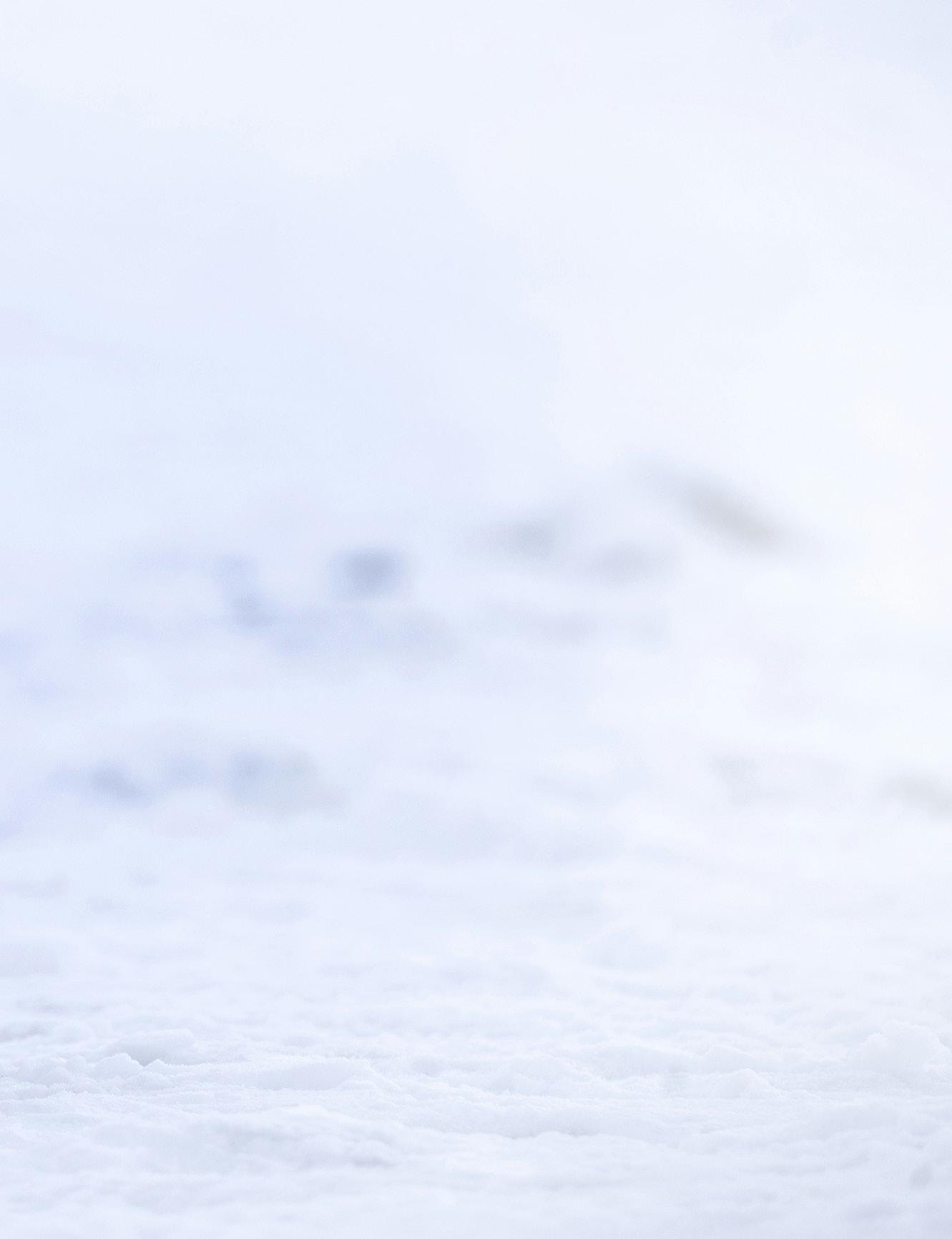
I HONOR THE LIGHT WITHIN, RELEASE ALL THAT NO LONGER SERVES, AND IGNITE THE FLAME OF SELF-LOVE AND COMPASSION FOR ALL LIVING BEINGS.
